
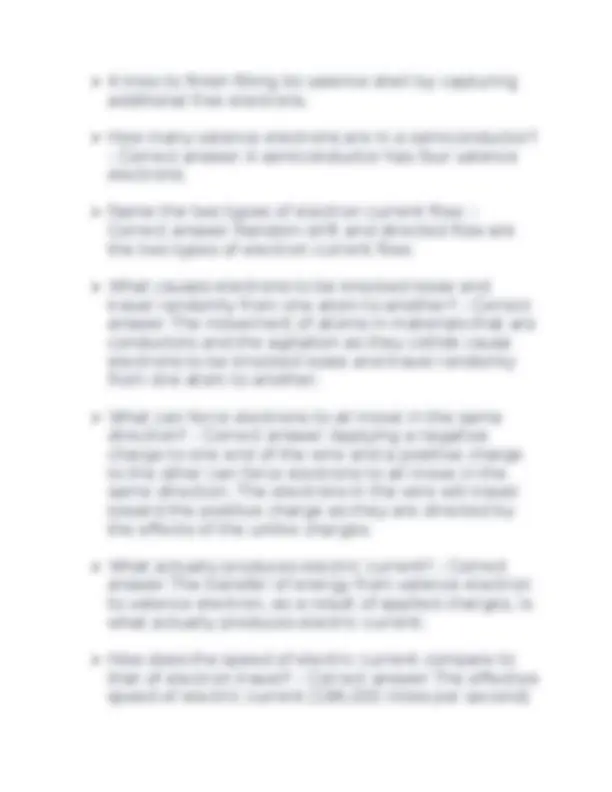
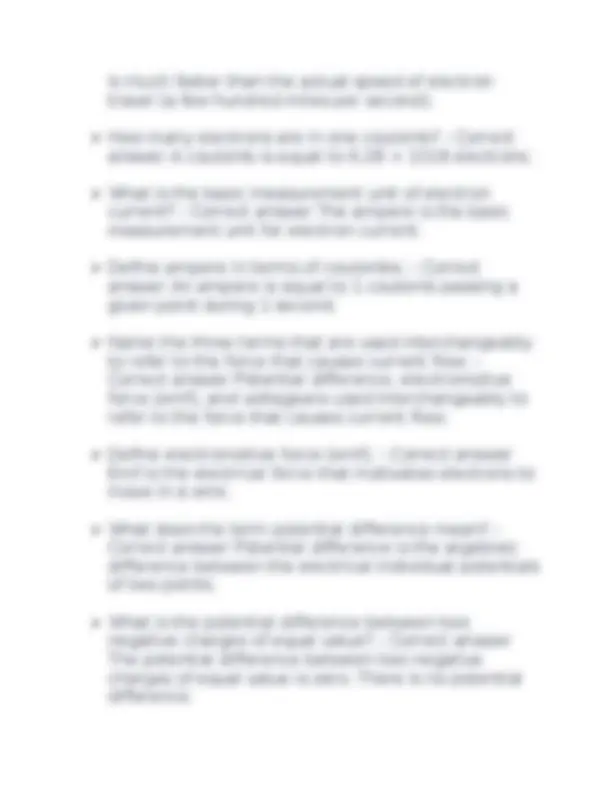
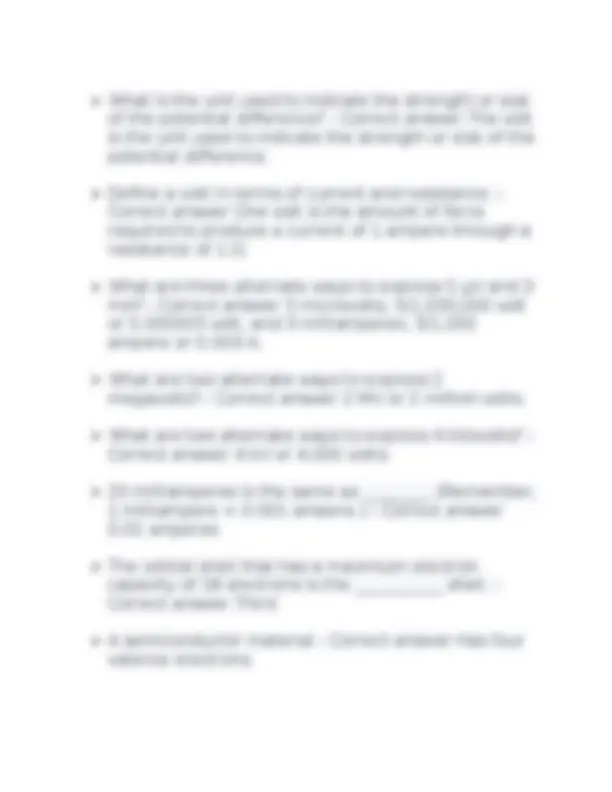
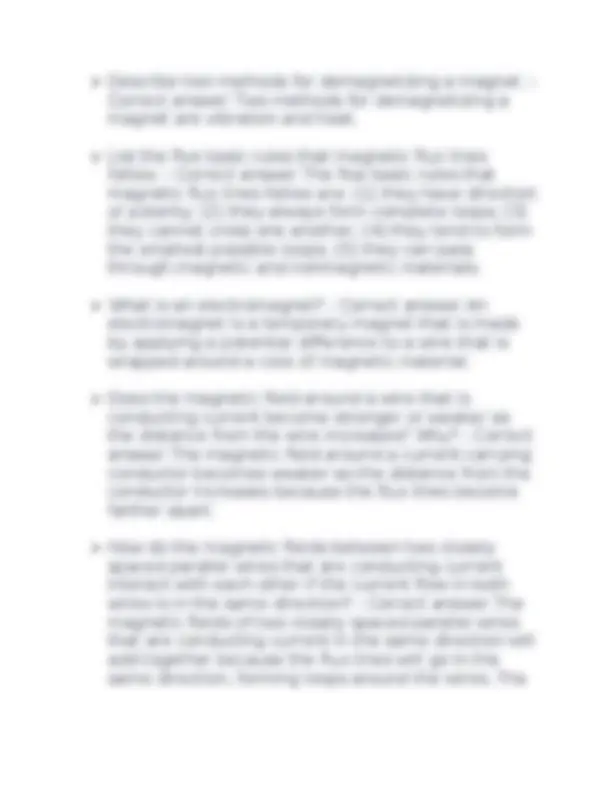
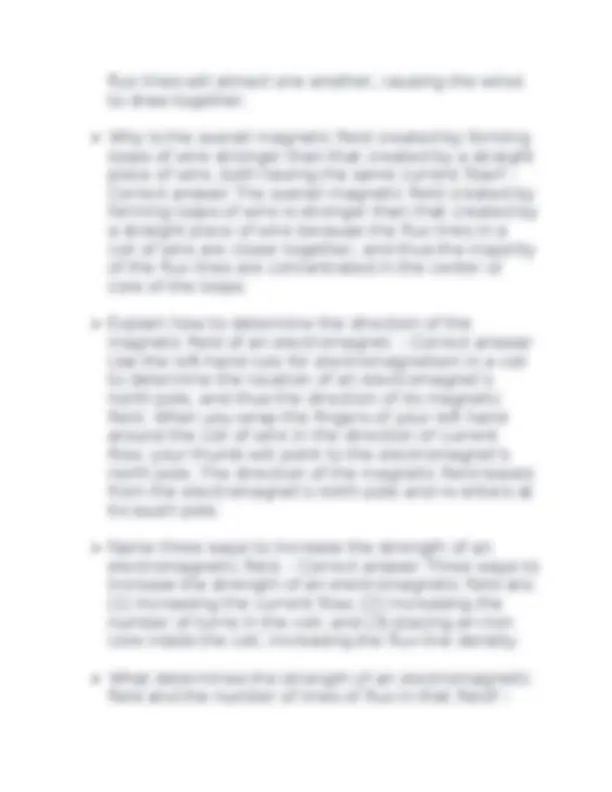
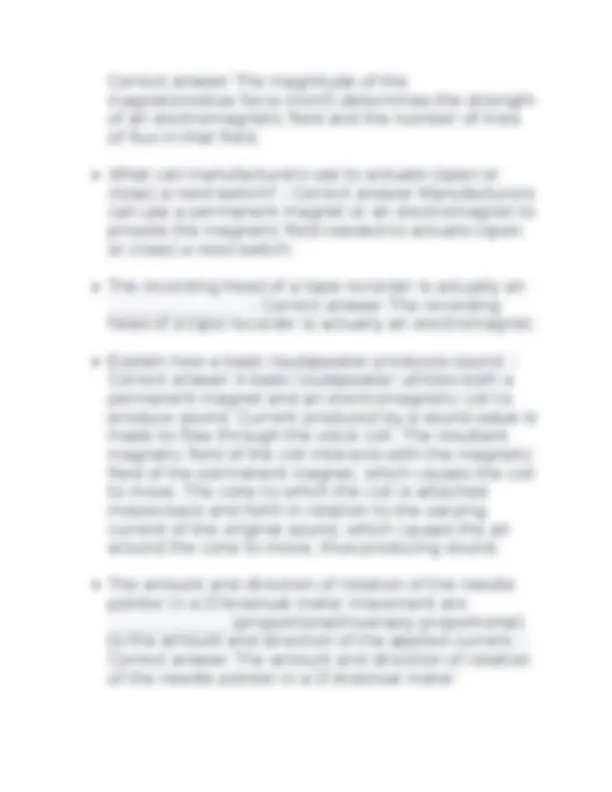
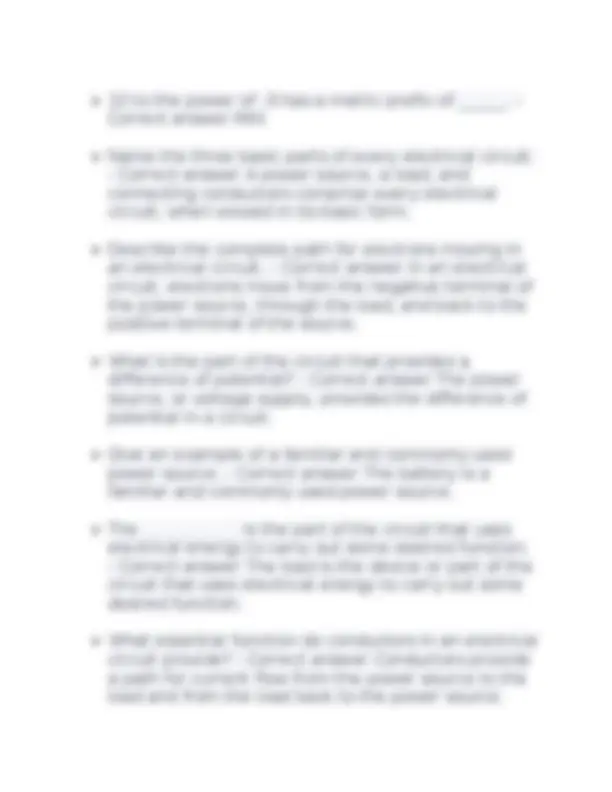
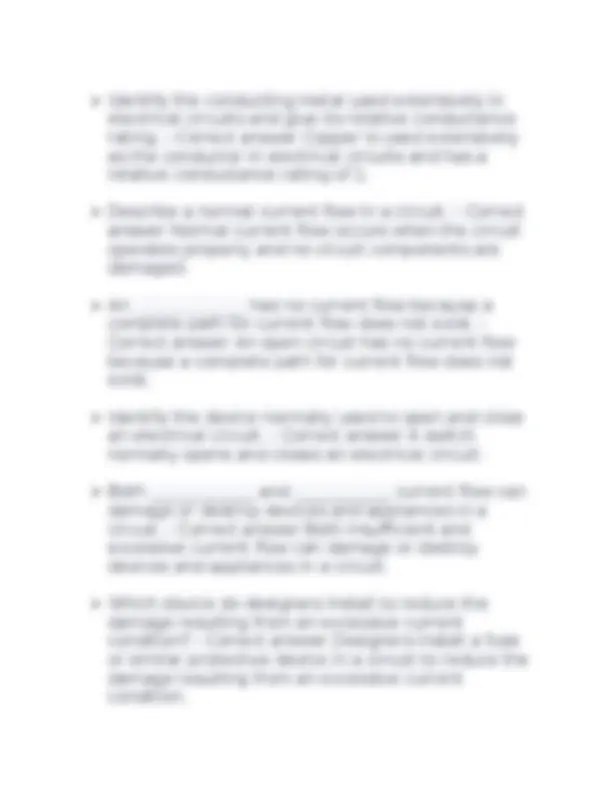
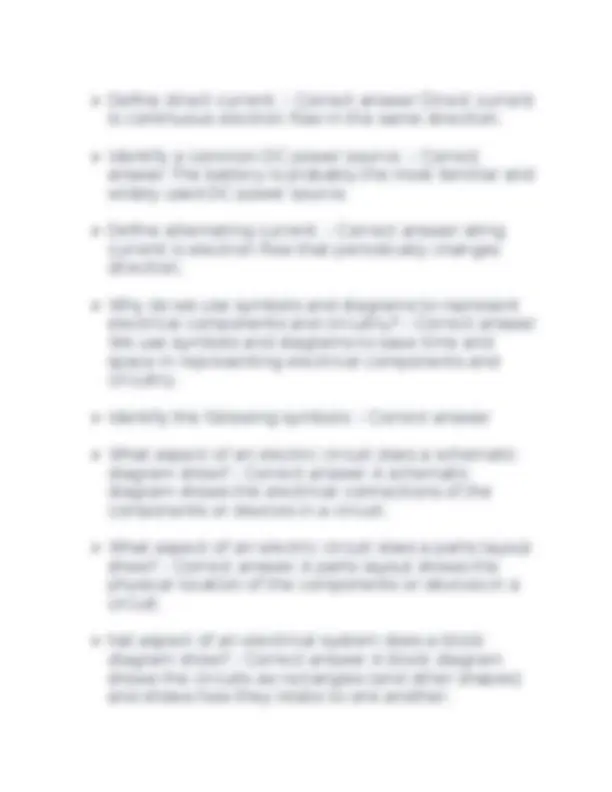
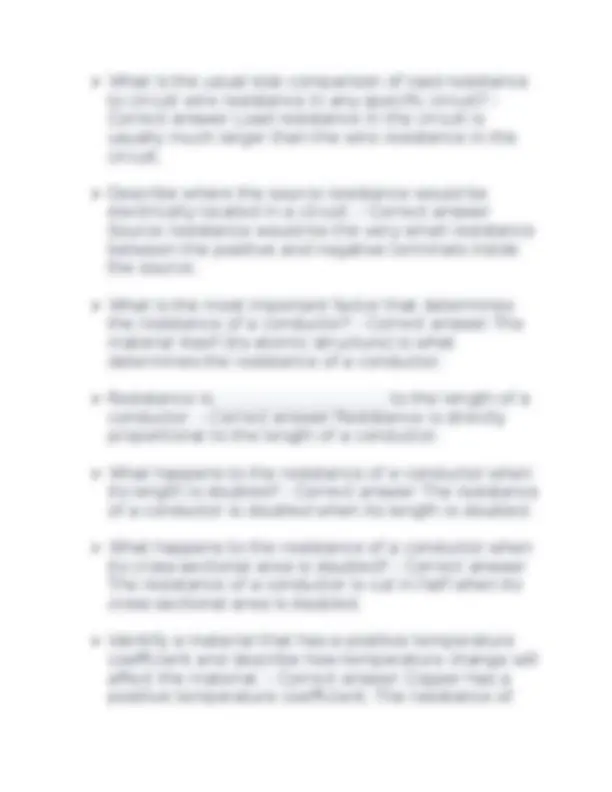
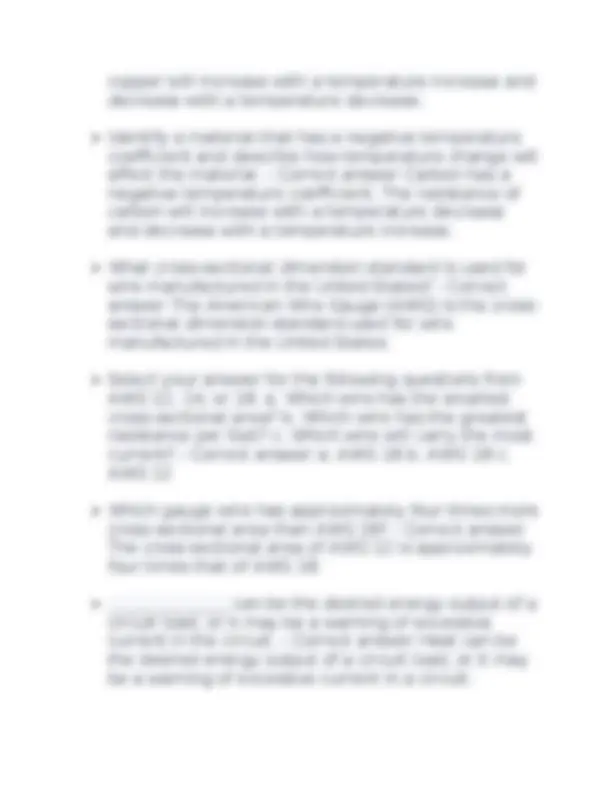
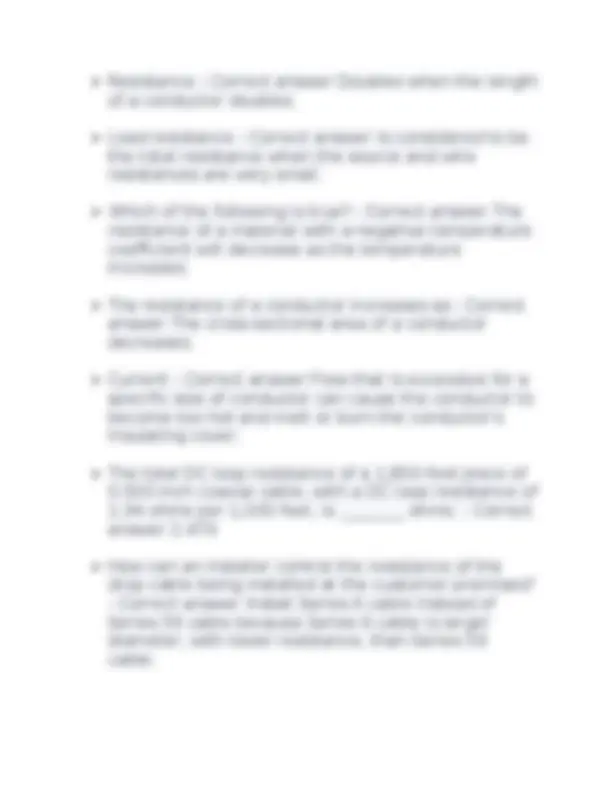
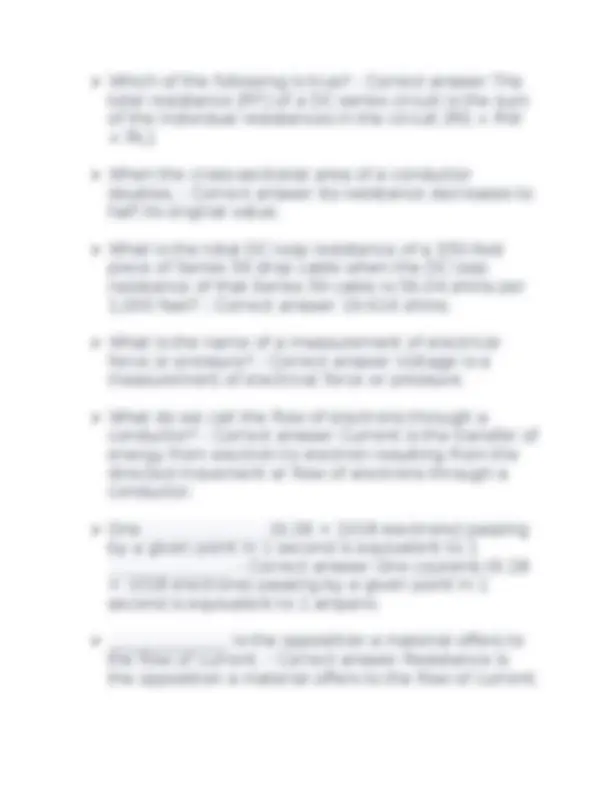
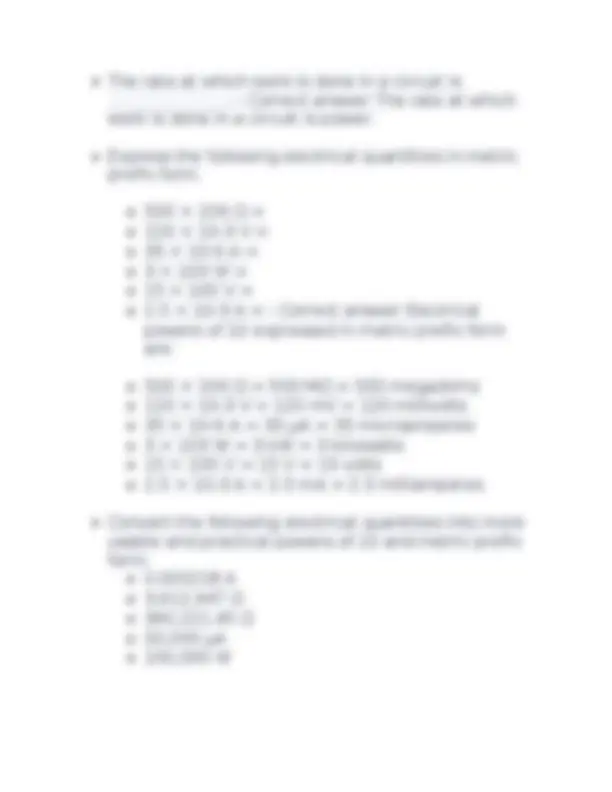
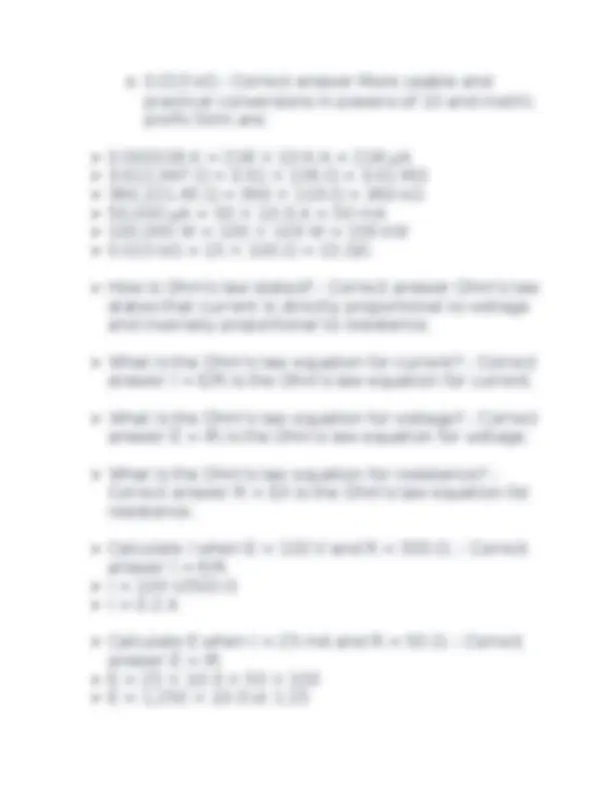
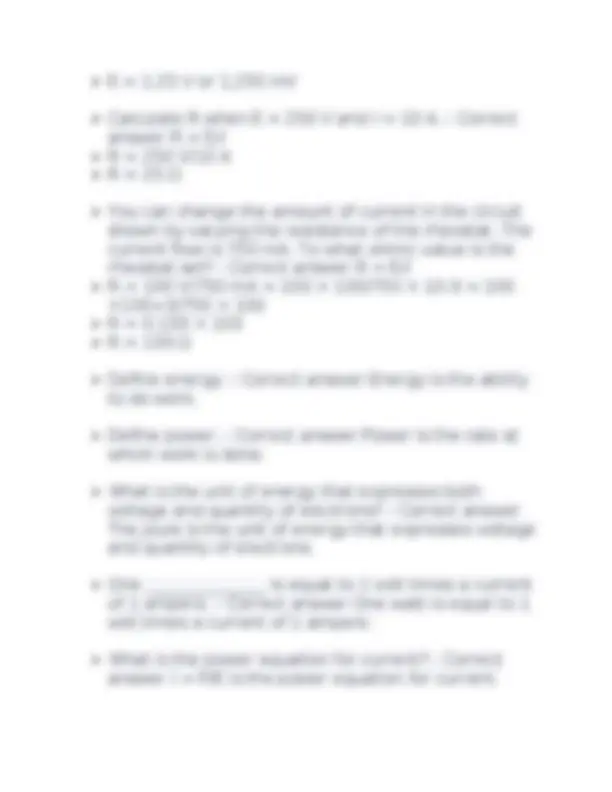
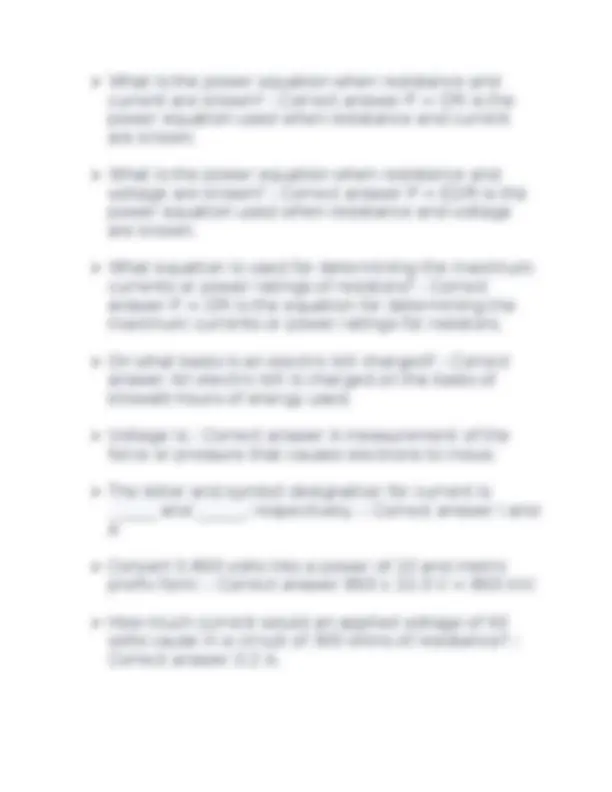

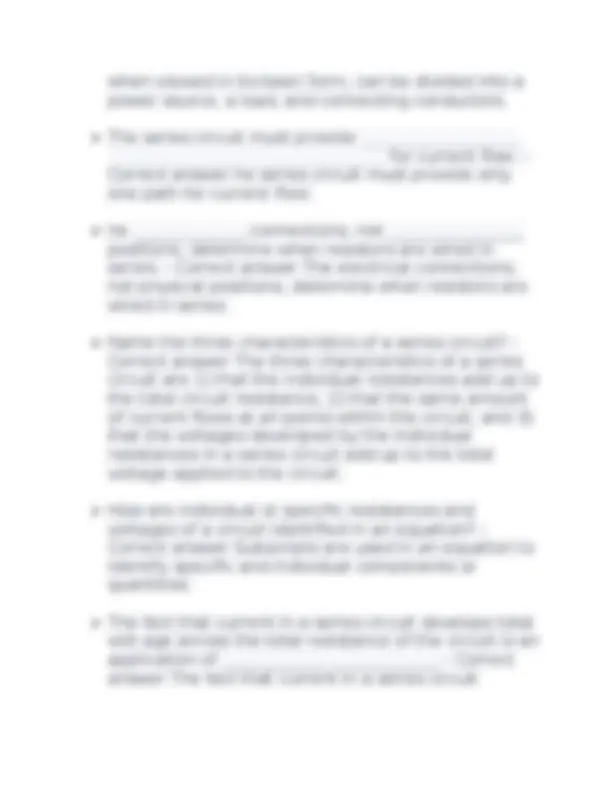
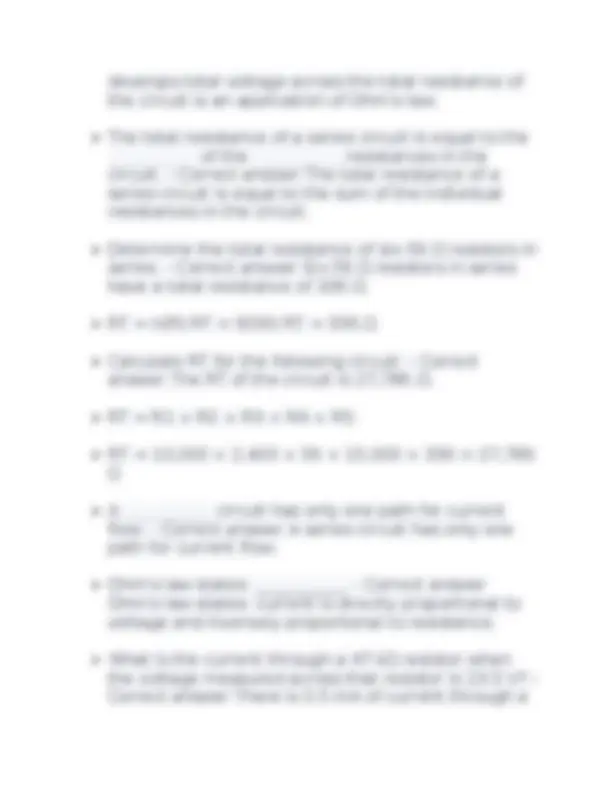
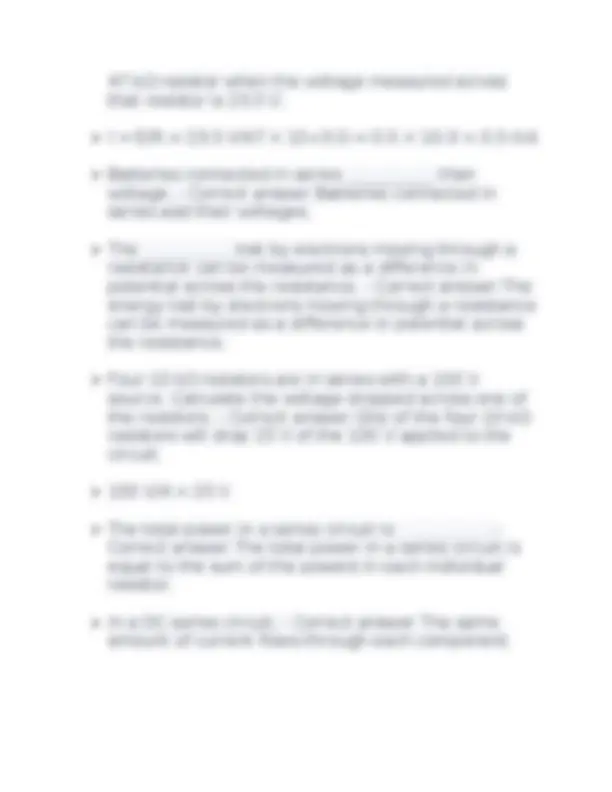
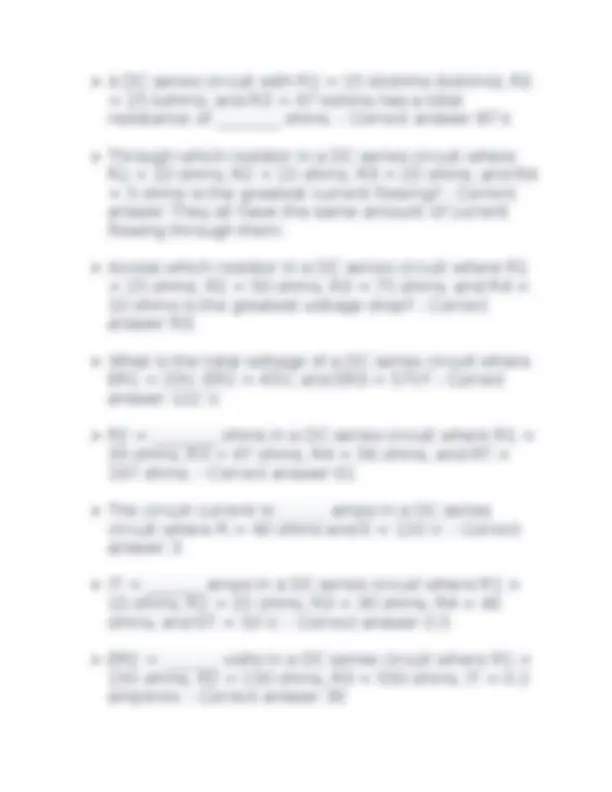
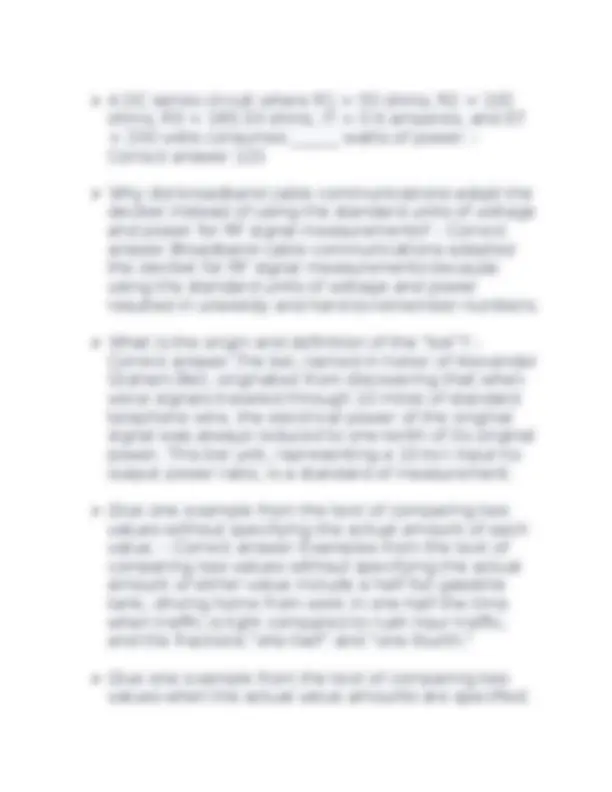
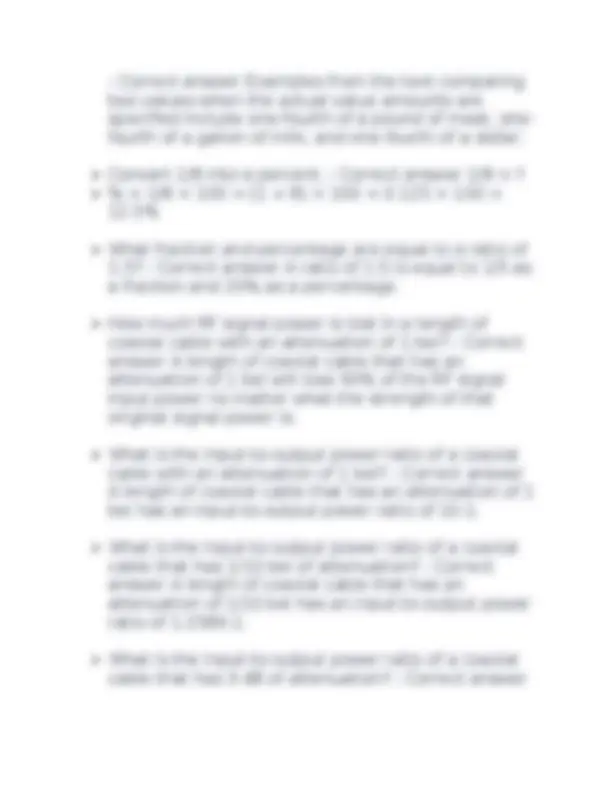
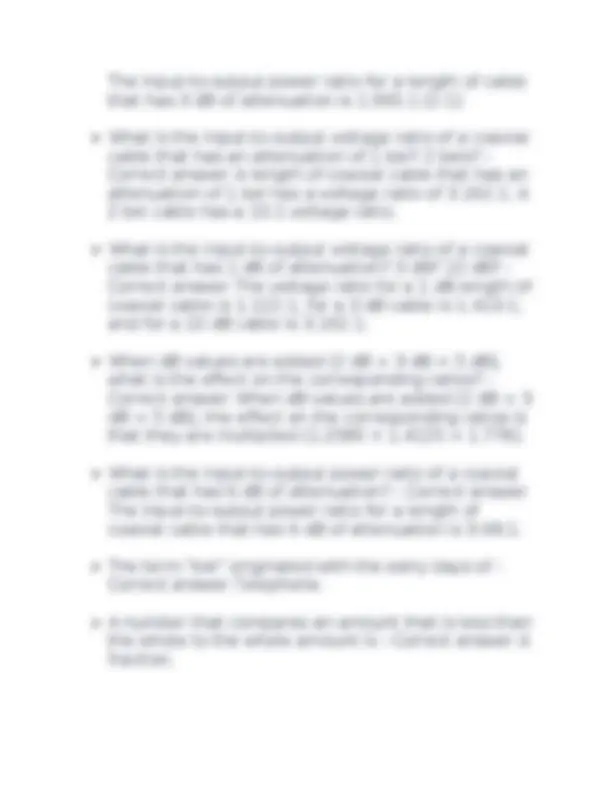
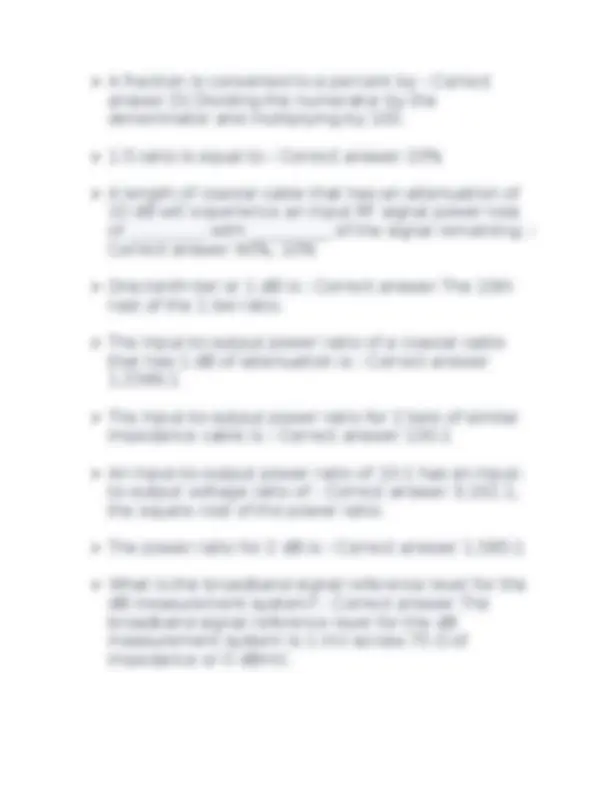
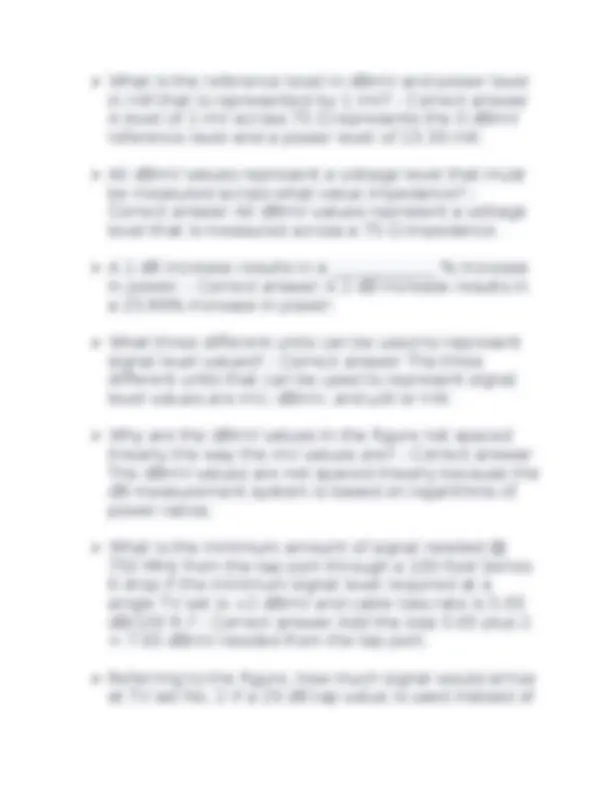
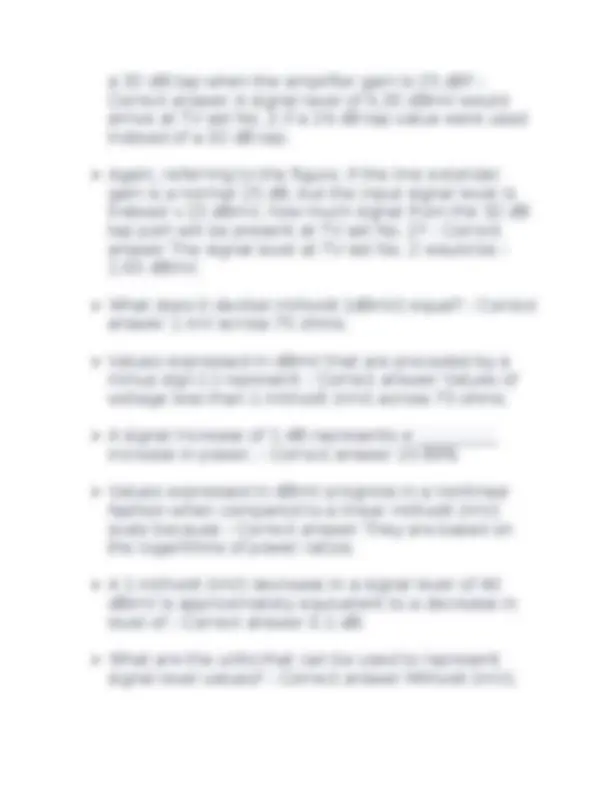
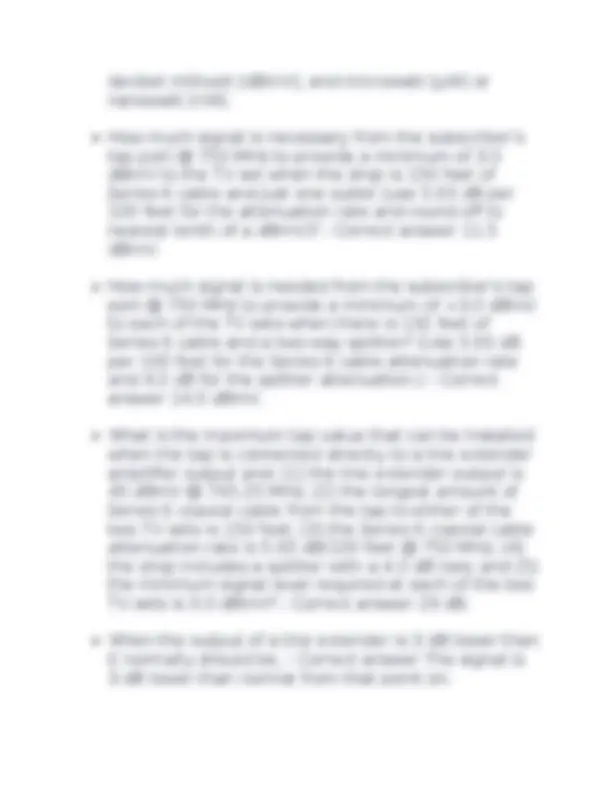
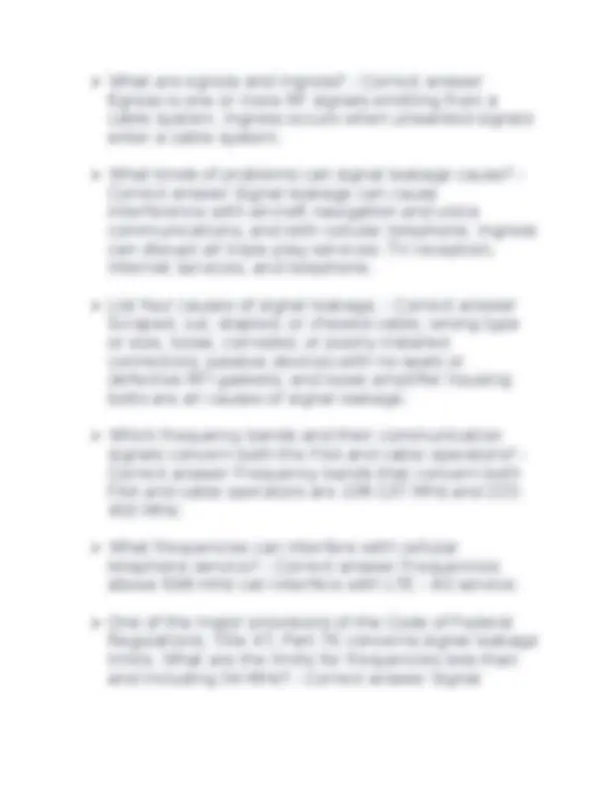
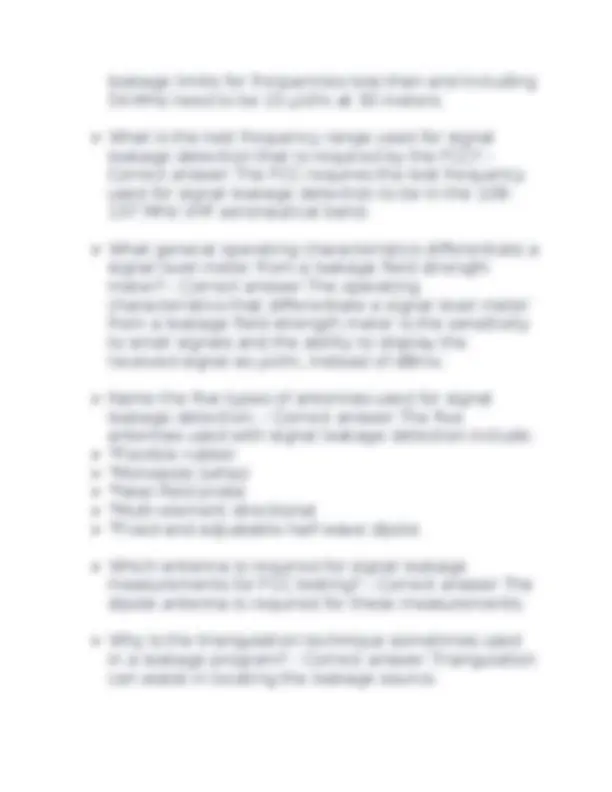
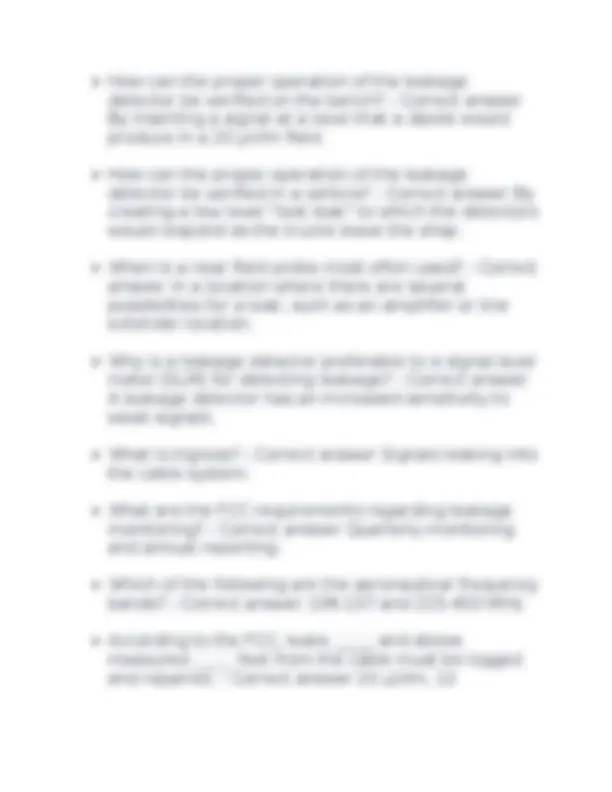
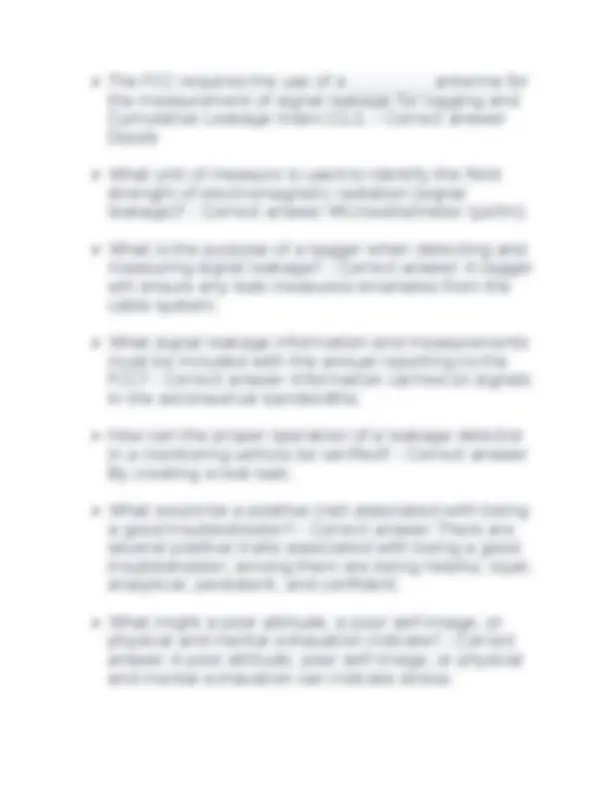
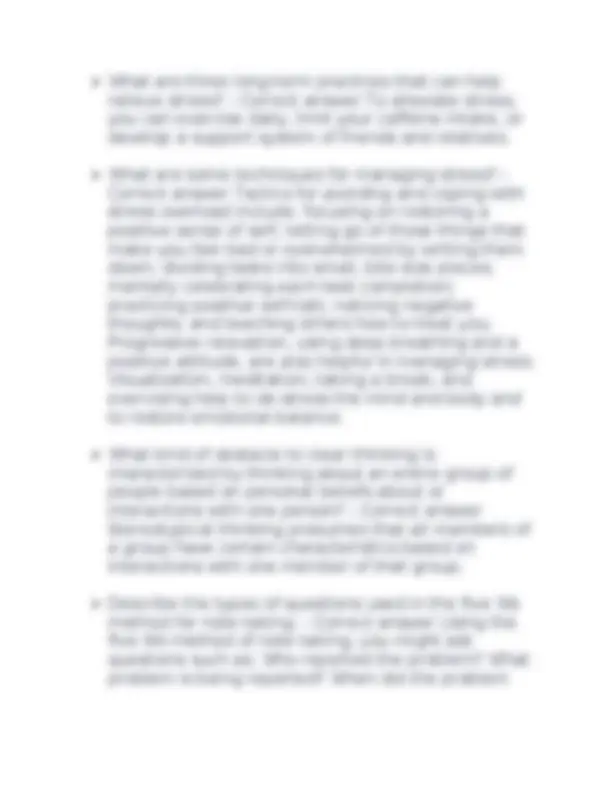
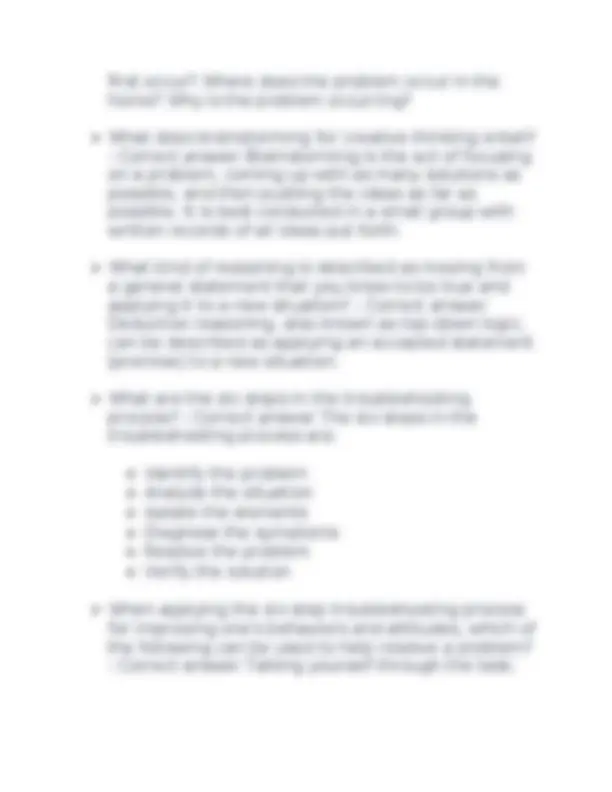
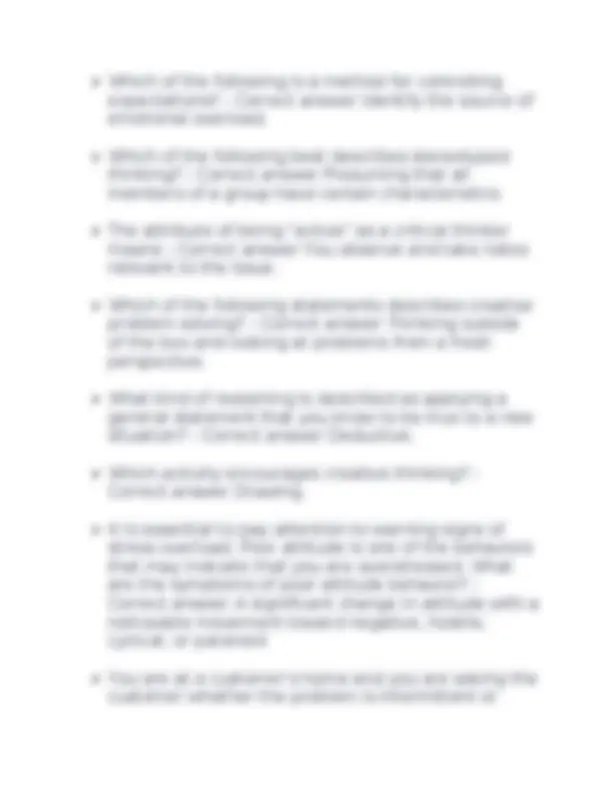
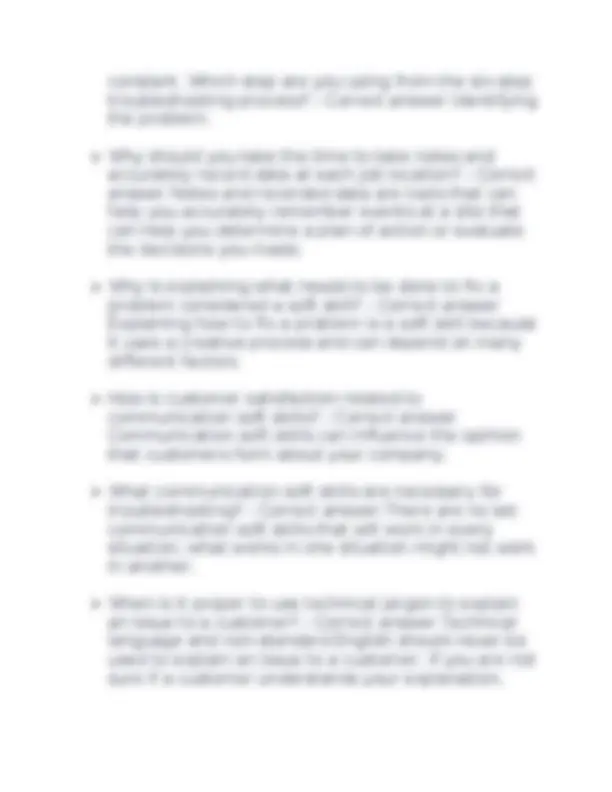
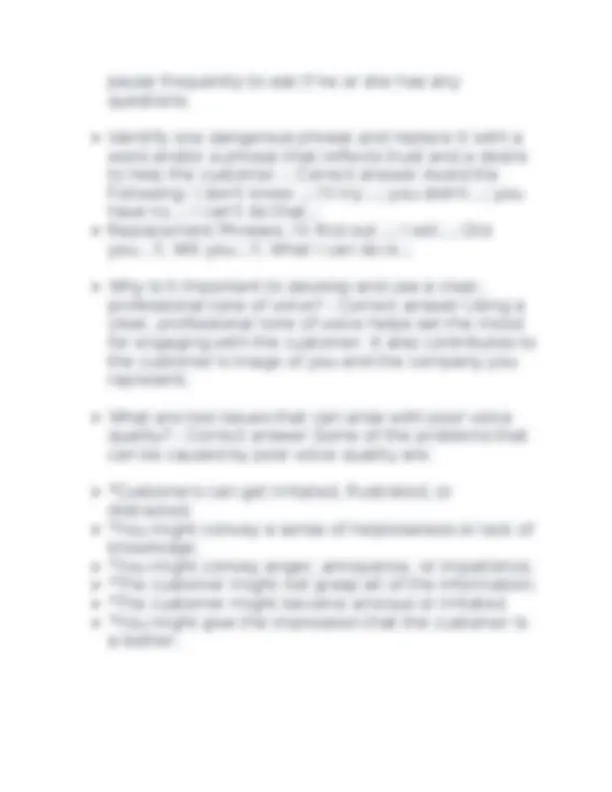
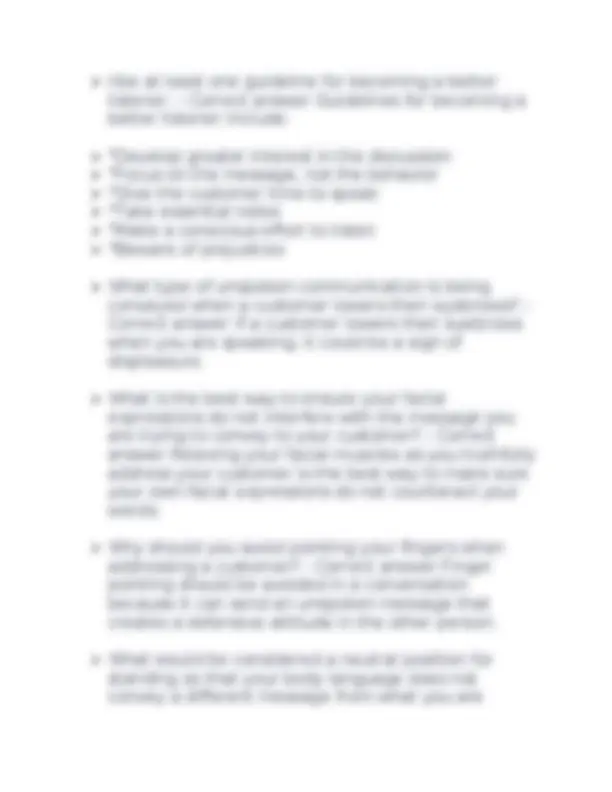
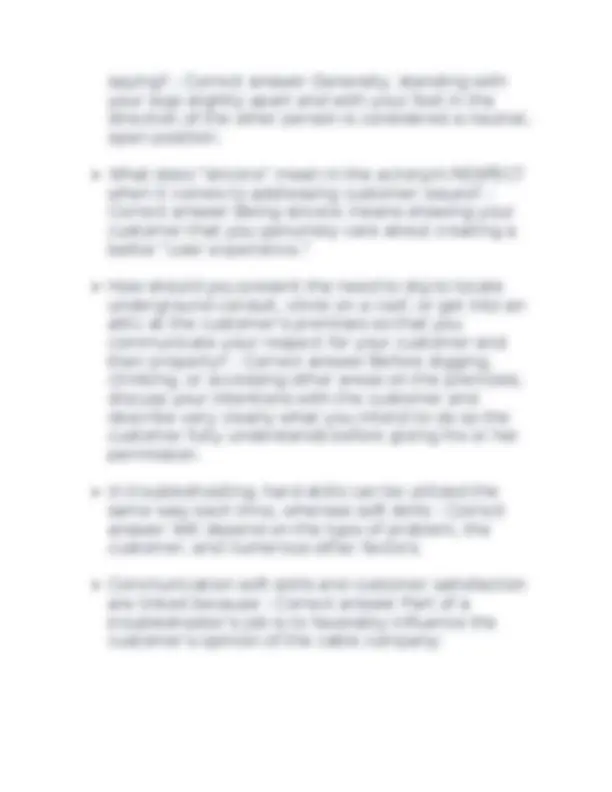
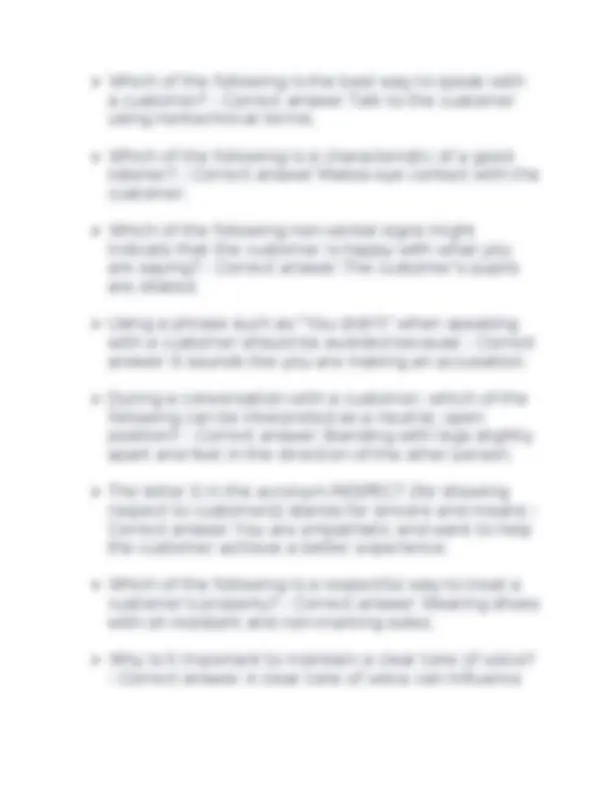
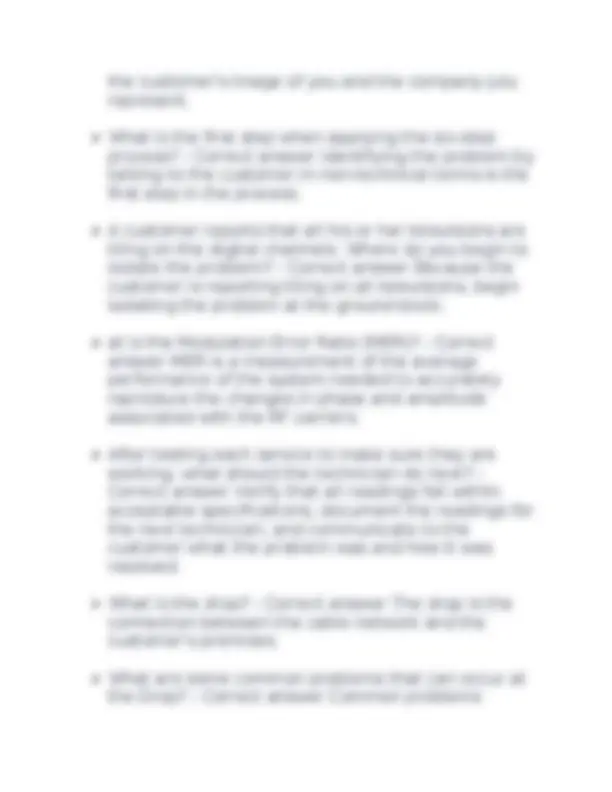
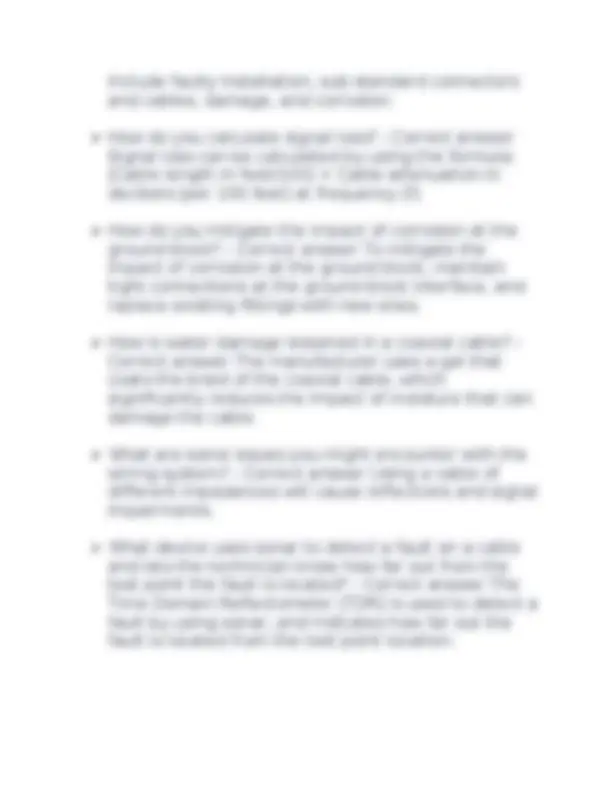
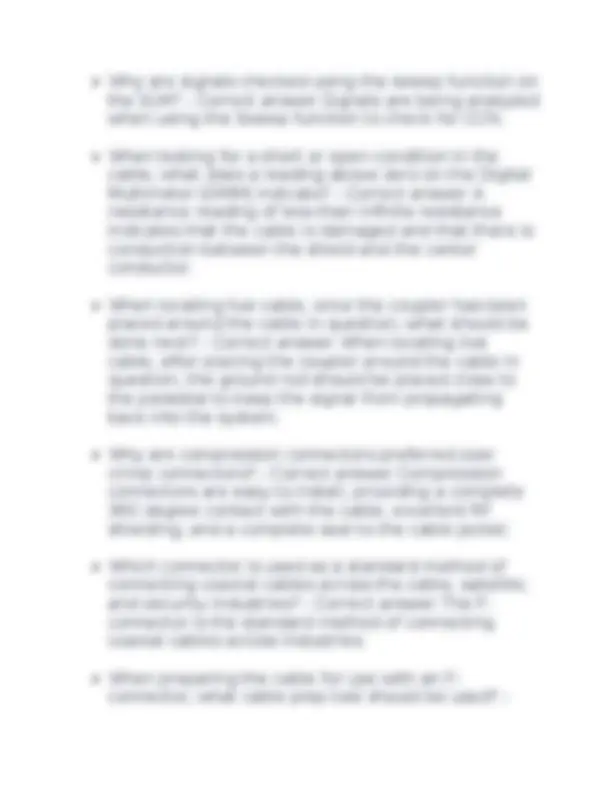
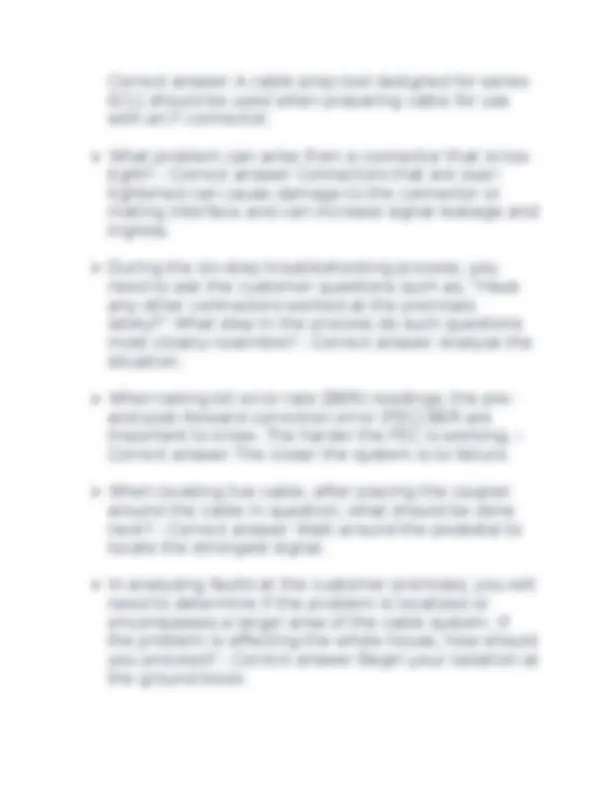
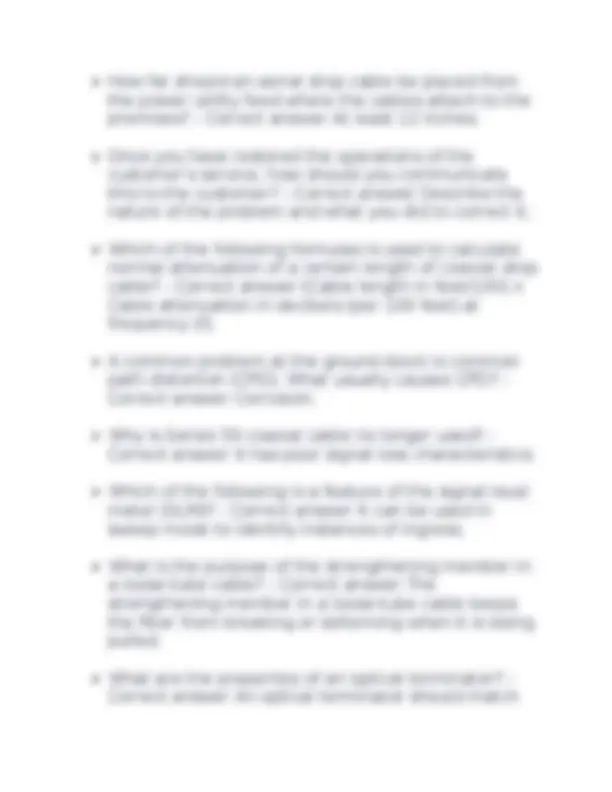
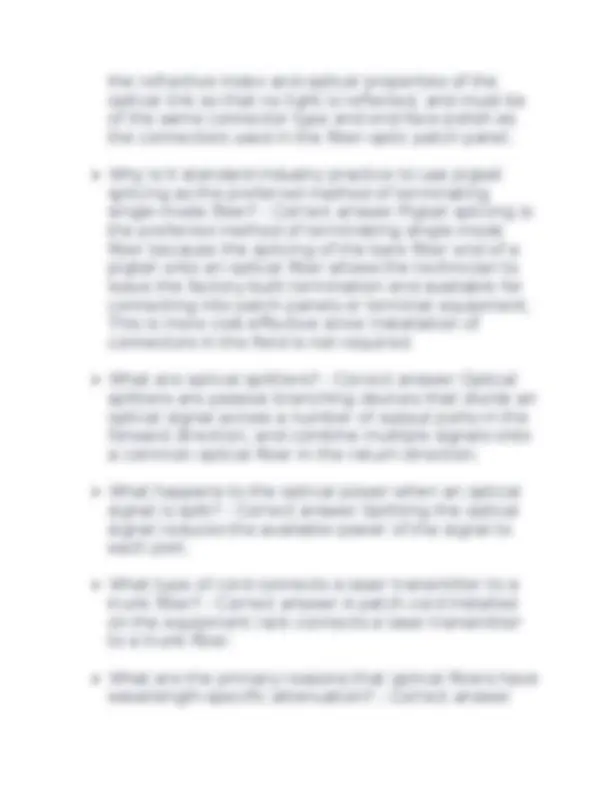
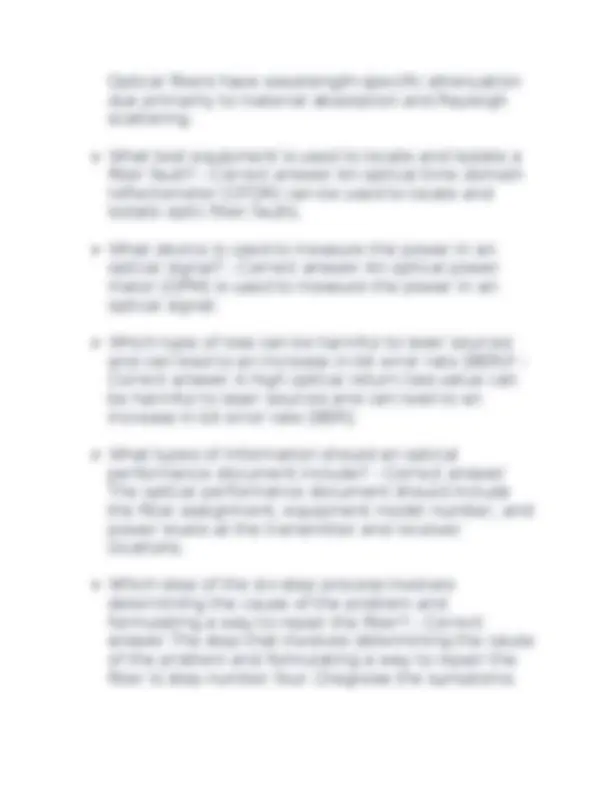
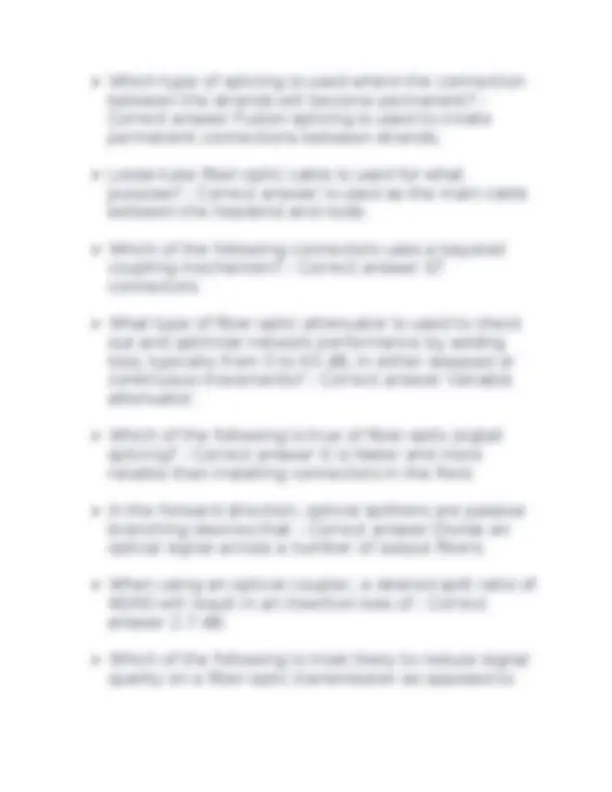
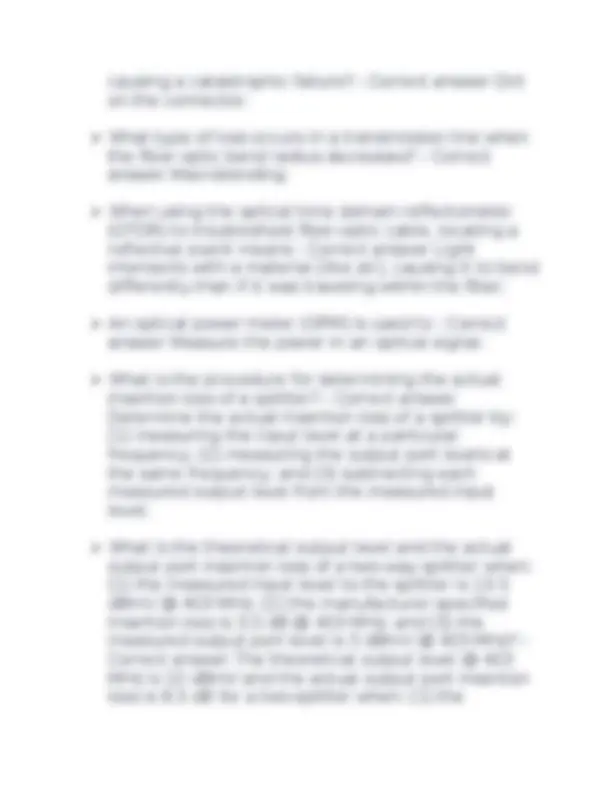
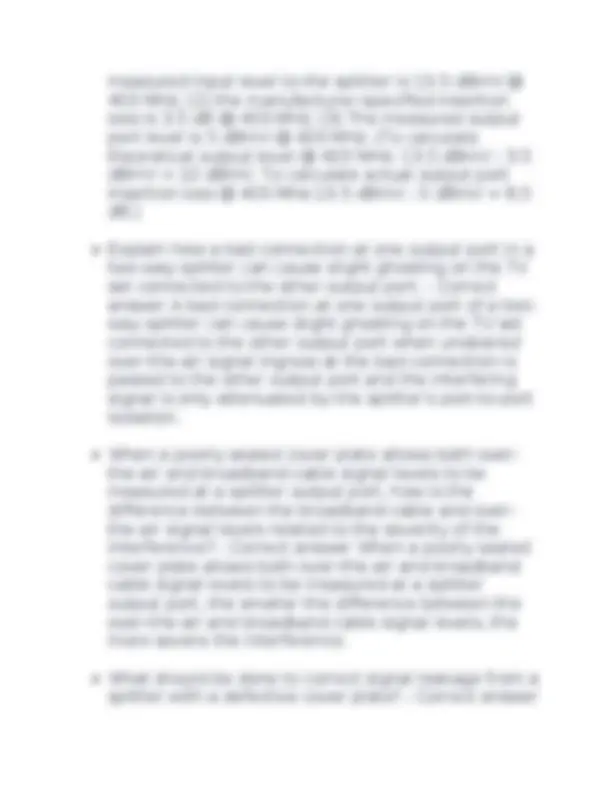
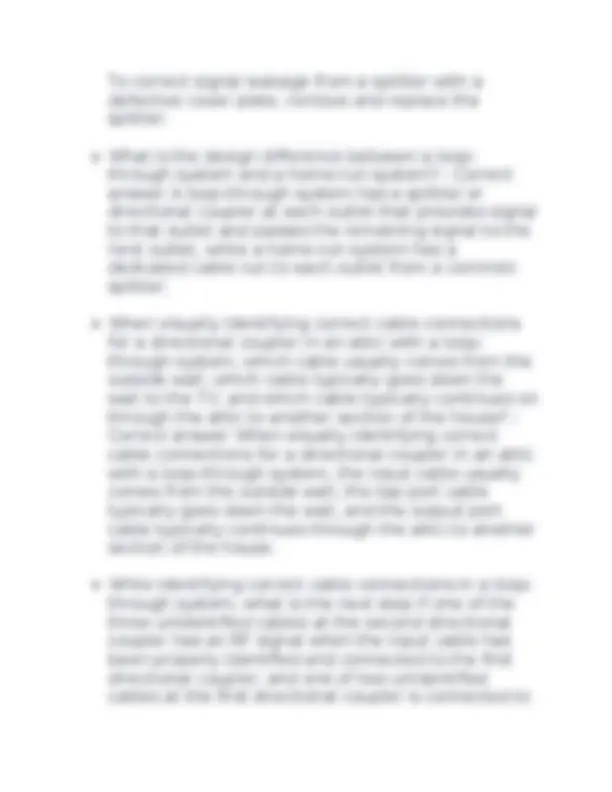
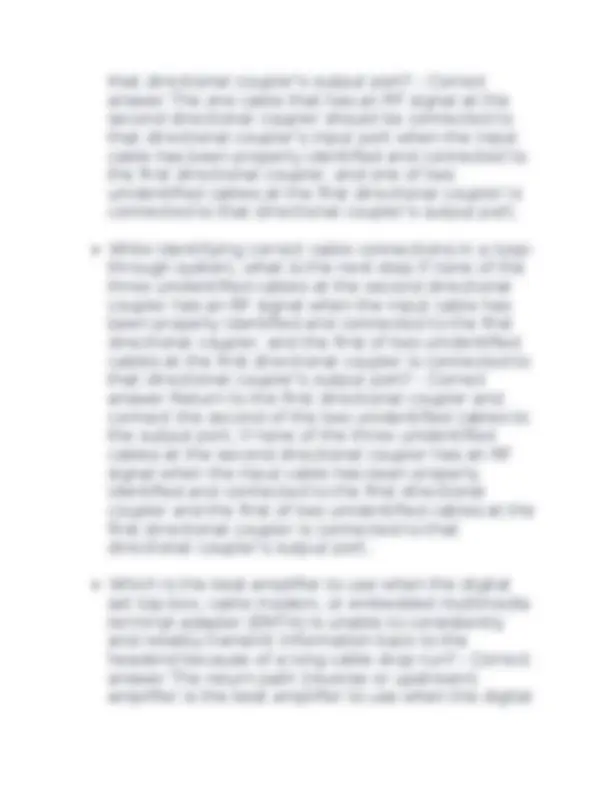
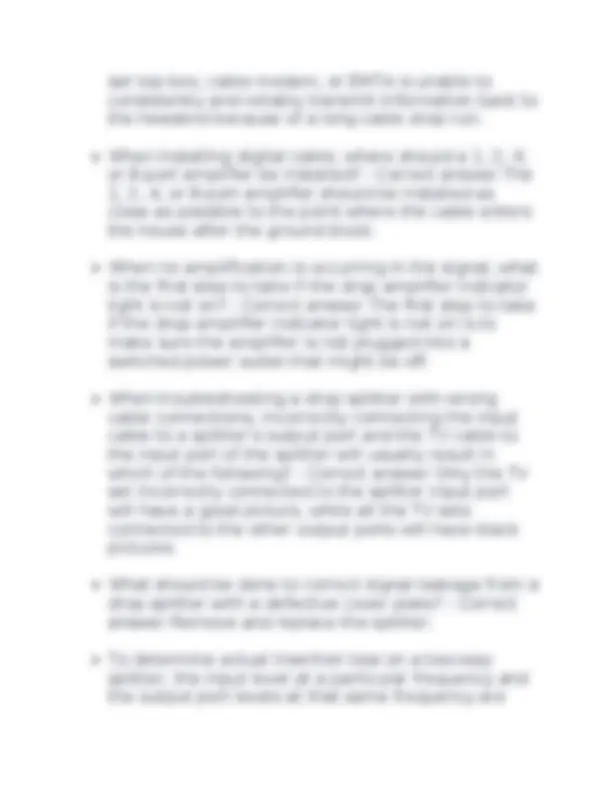
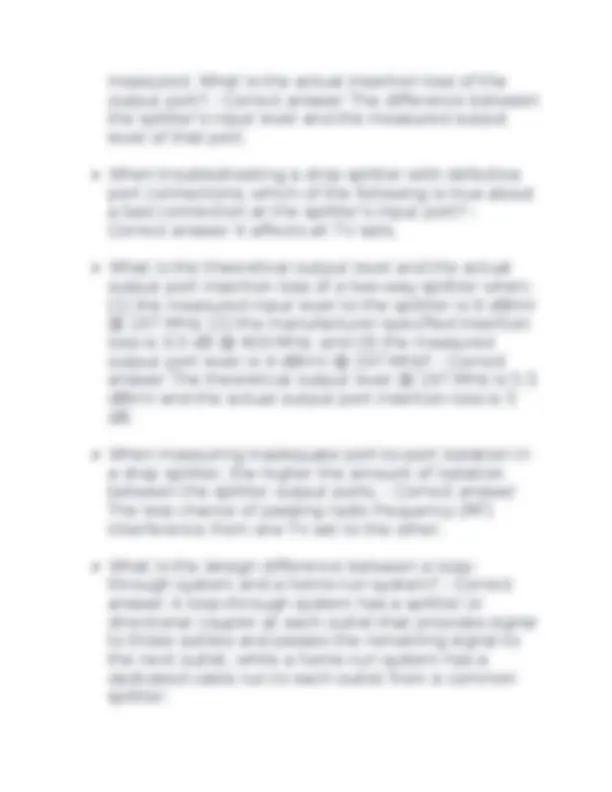
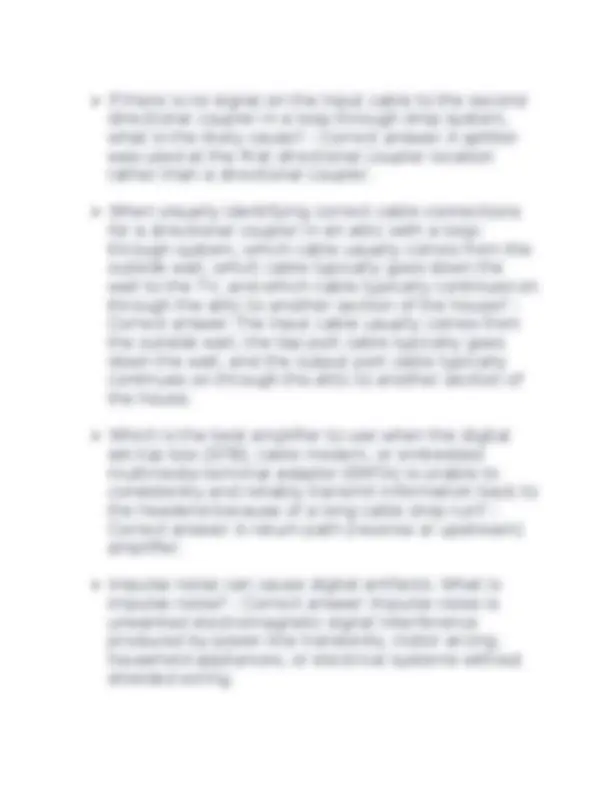
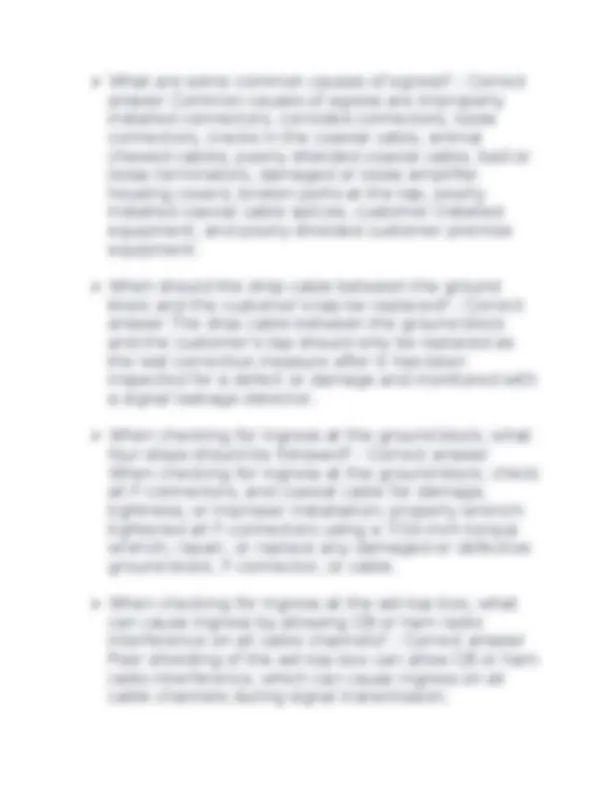
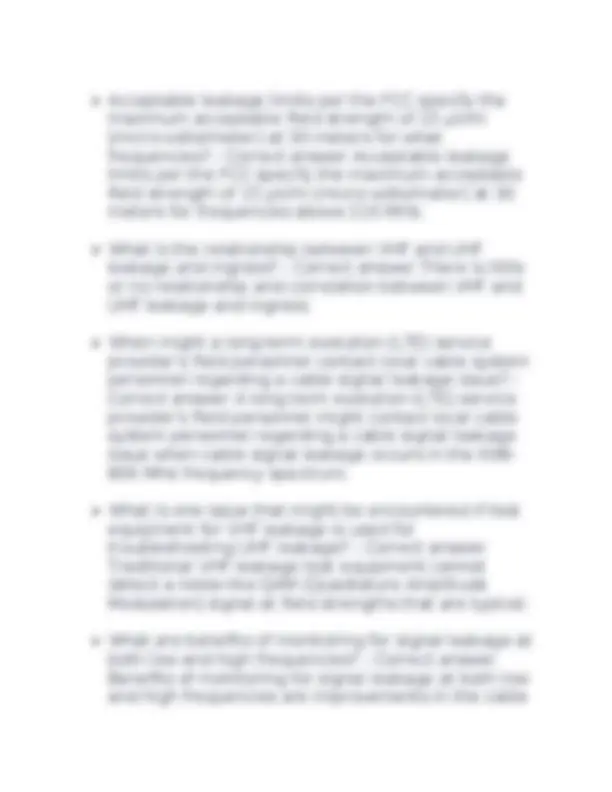
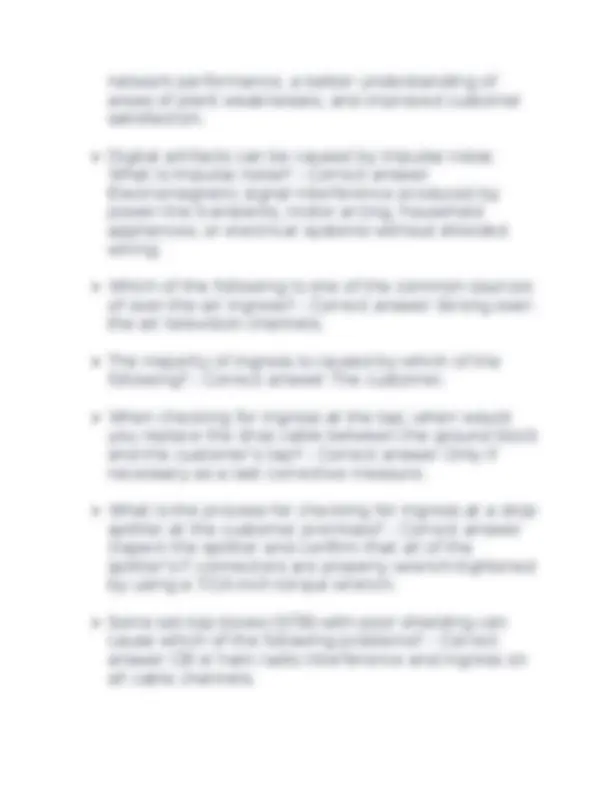
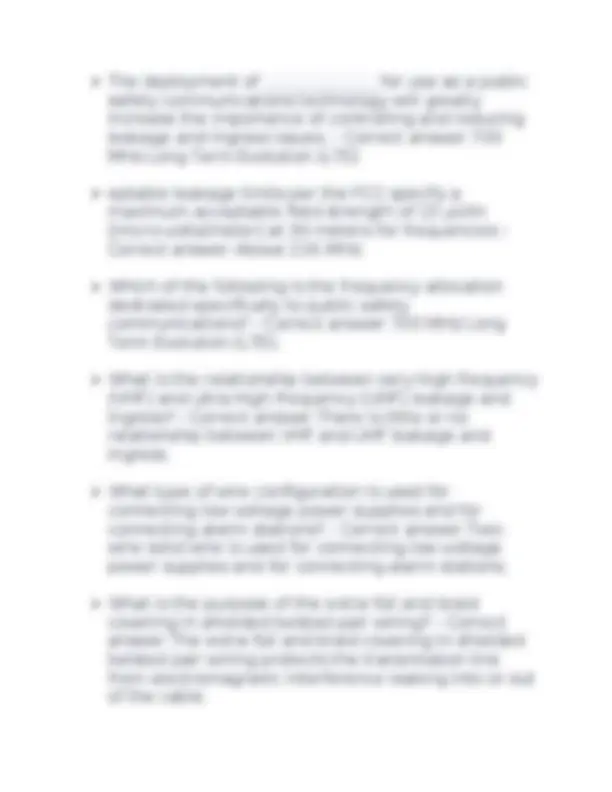
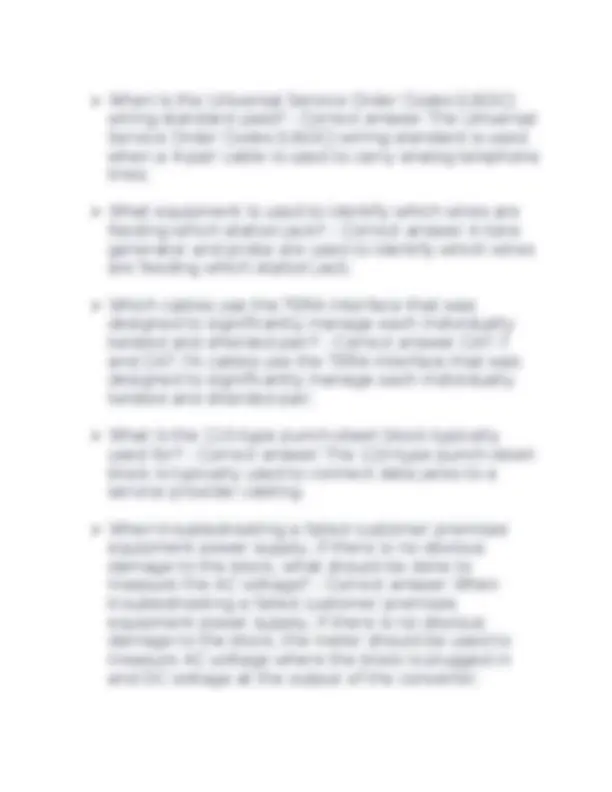
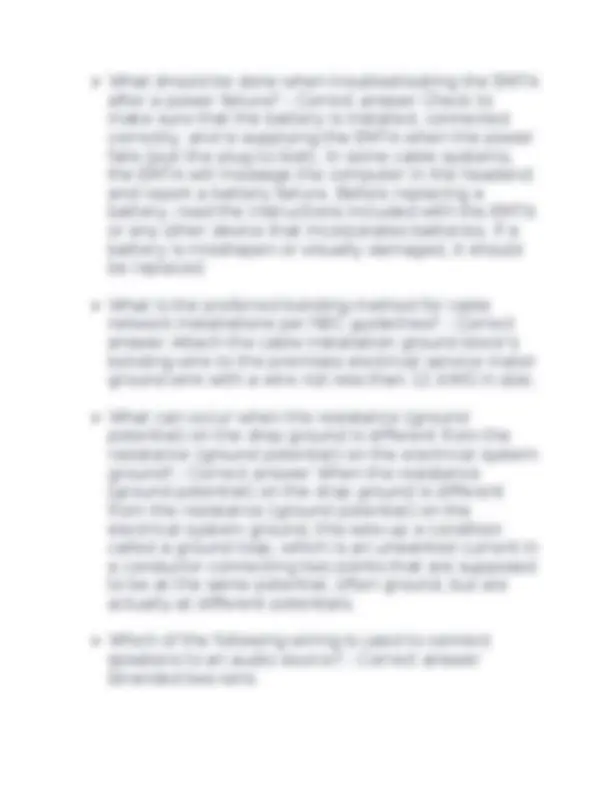
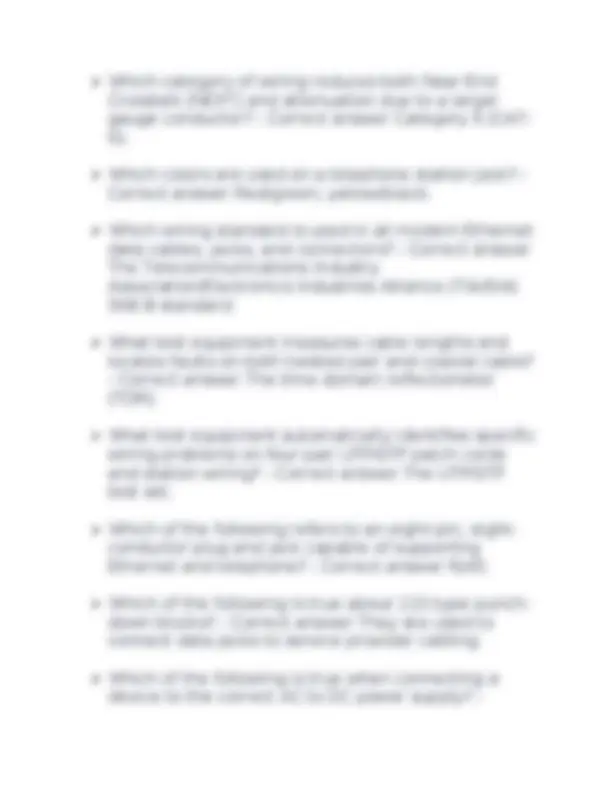
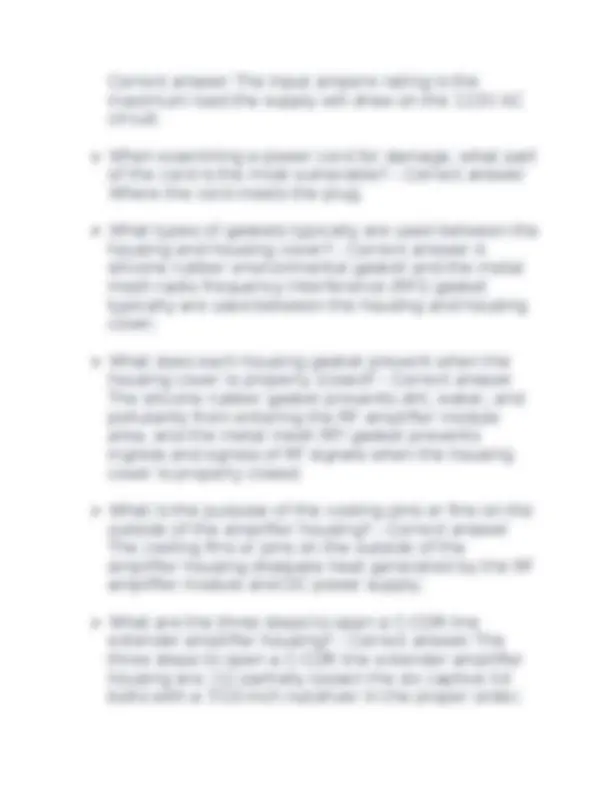
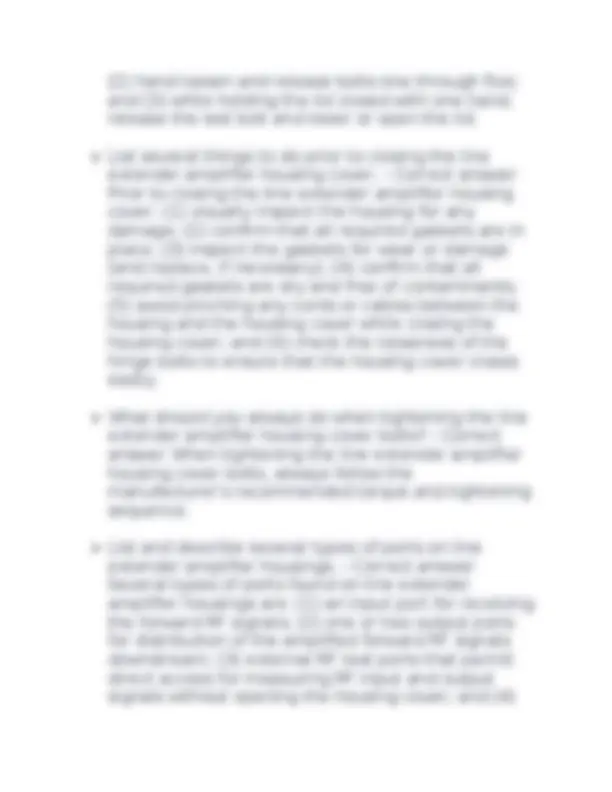
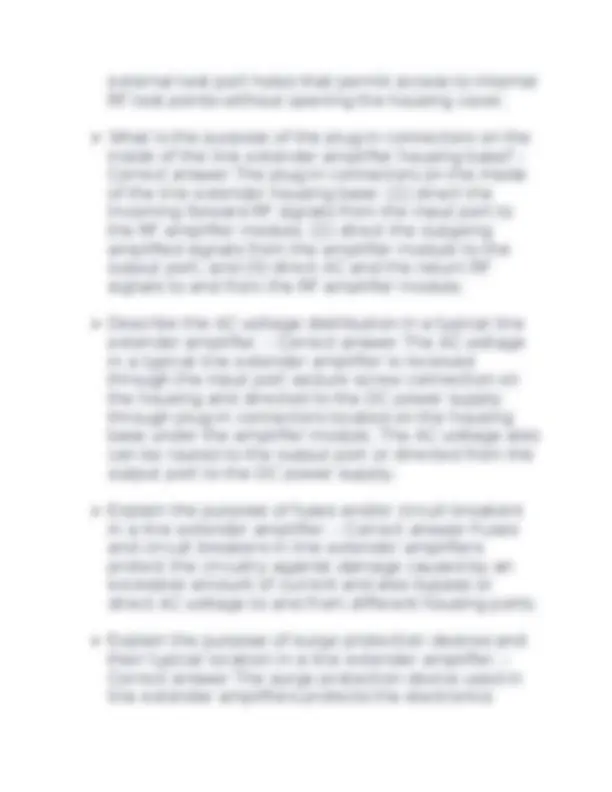
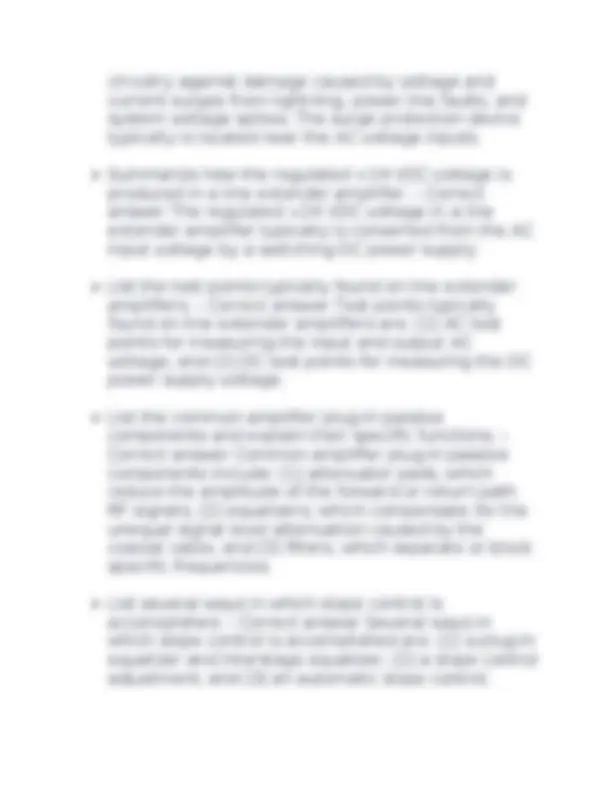
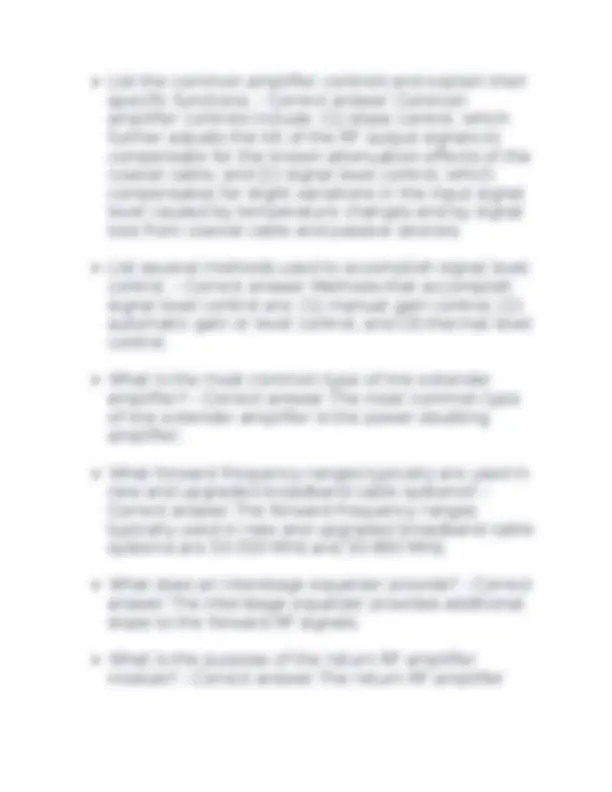
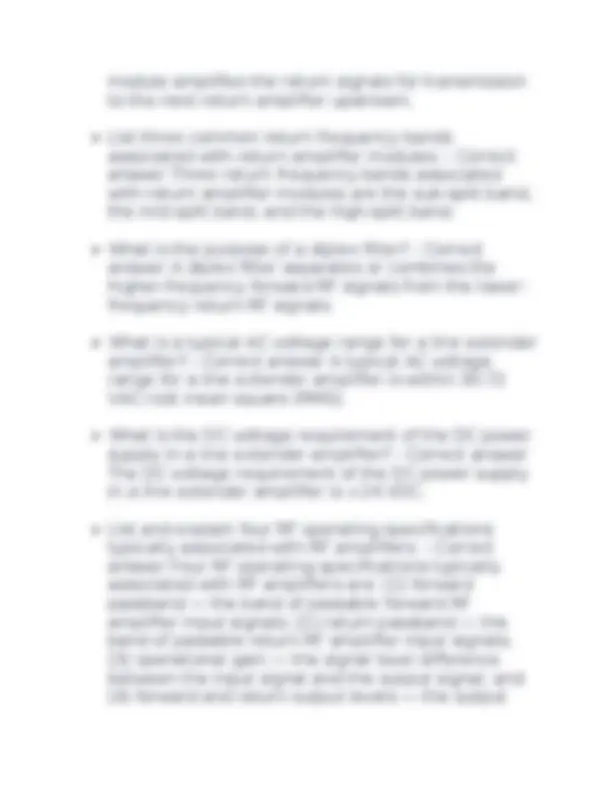

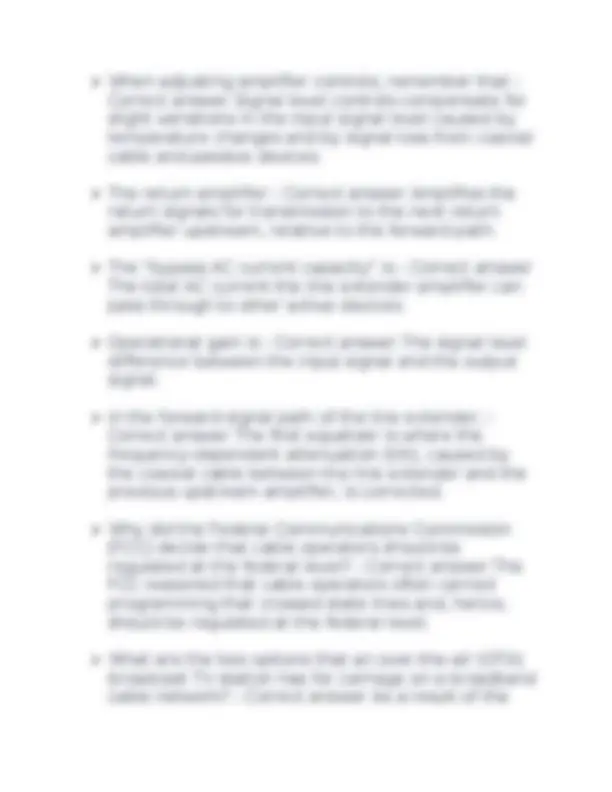
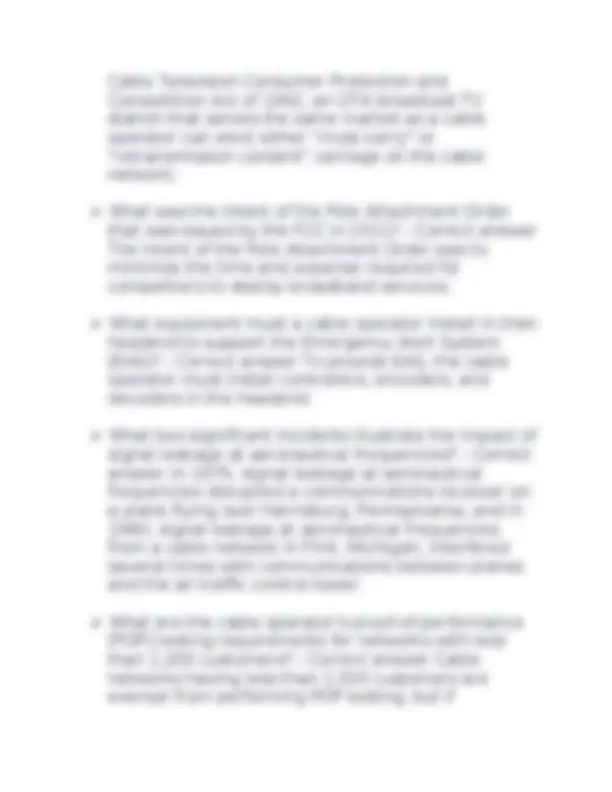
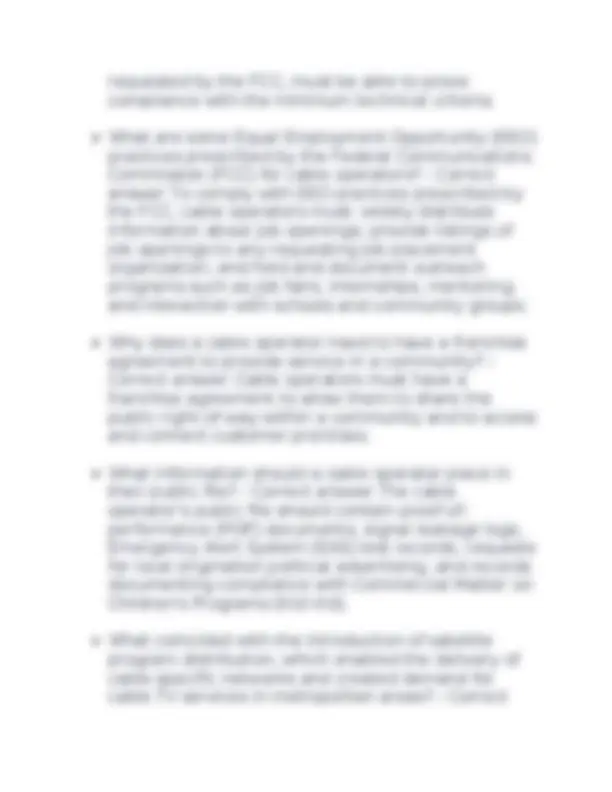
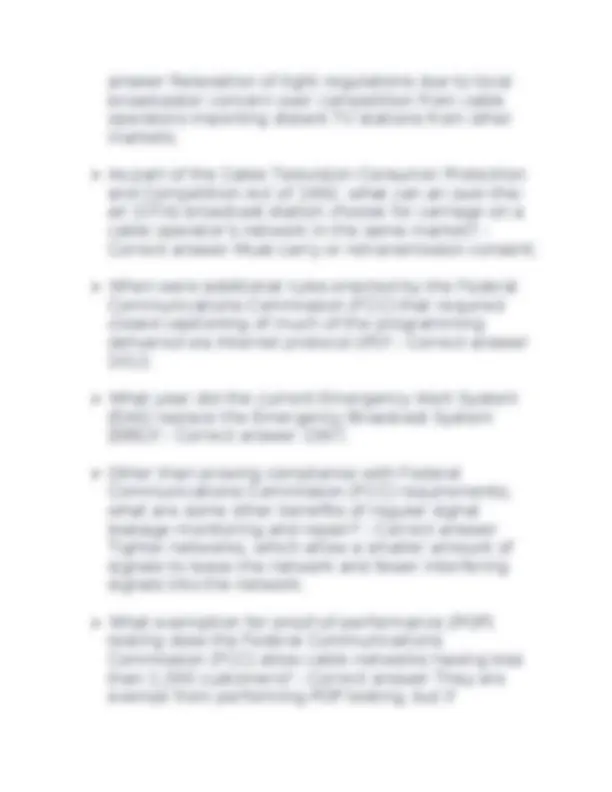
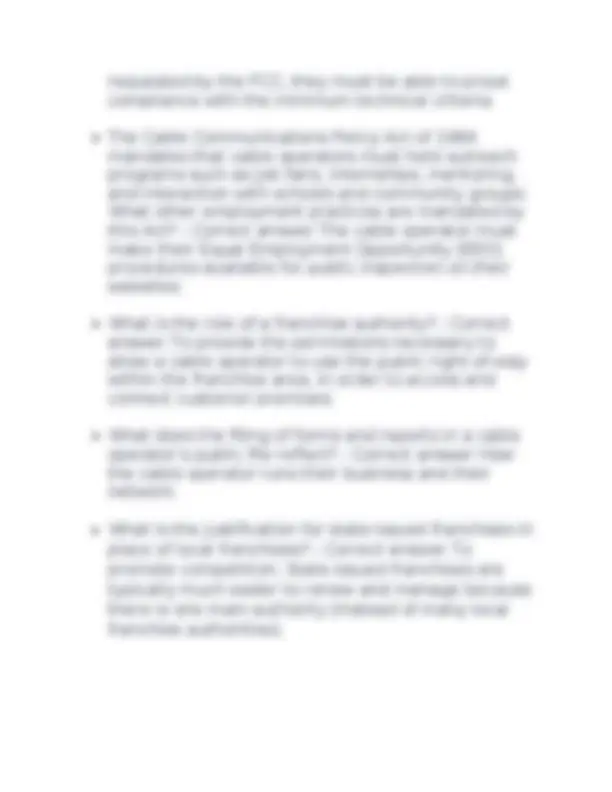


Study with the several resources on Docsity

Earn points by helping other students or get them with a premium plan


Prepare for your exams
Study with the several resources on Docsity

Earn points to download
Earn points by helping other students or get them with a premium plan
Community
Ask the community for help and clear up your study doubts
Discover the best universities in your country according to Docsity users
Free resources
Download our free guides on studying techniques, anxiety management strategies, and thesis advice from Docsity tutors
NCTI Installer Tech/November Exam test 2024 with correct answers for the best students
Typology: Exams
1 / 83

This page cannot be seen from the preview
Don't miss anything!












































































Why do only the outer electrons leave their orbit shells? - Correct answer Only outer electrons leave their orbit shells because electrons farthest from the nucleus are more easily freed from their orbits due to a weaker electrostatic force. What is required to have a balanced (or stable) atom? - Correct answer The number of electrons must equal the number of protons in order to have a balanced atom. List the capacity of each of the first four orbital shells of an atom. - Correct answer Shell: #1 = 2 electrons; #2 = 8 electrons; #3 = 18 electrons; and #4 = 32 electrons. What is the maximum electron capacity of a valence shell? - Correct answer A valence shell can hold a maximum of eight electrons. Electrons in orbits nearest the nucleus contain _________ energy than those in more distant orbits. - Correct answer Electrons in orbits nearest the
nucleus contain less energy than those in more distant orbits. What will happen to a valence electron that has enough energy added to it? - Correct answer A valence electron that has enough energy added to it will move away from its atom. What major factor determines which category a particular element belongs? - Correct answer The number of electrons in the valence shell determines the element category. How many valence electrons are there in a good conductor? - Correct answer A good conductor has only one or two valence electrons. List gold, silver, and copper in the order of best conductivity. (List the best conductor first.) - Correct answer #1 Silver; #2 Copper; #3 Gold Why do metals that each have only one valence electron differ in their conductivity? - Correct answer Metals that each have one valence electron differ in their conductivity because of the way their atoms pack together into a solid structure. Describe the two characteristics of an insulator. - Correct answer The two characteristics of an insulator are as follows: Its valence shell is almost filled and tends to be fairly stable.
is much faster than the actual speed of electron travel (a few hundred miles per second). How many electrons are in one coulomb? - Correct answer A coulomb is equal to 6.28 × 1018 electrons. What is the basic measurement unit of electron current? - Correct answer The ampere is the basic measurement unit for electron current. Define ampere in terms of coulombs. - Correct answer An ampere is equal to 1 coulomb passing a given point during 1 second. Name the three terms that are used interchangeably to refer to the force that causes current flow. - Correct answer Potential difference, electromotive force (emf), and voltageare used interchangeably to refer to the force that causes current flow. Define electromotive force (emf). - Correct answer Emf is the electrical force that motivates electrons to move in a wire. What does the term potential difference mean? - Correct answer Potential difference is the algebraic difference between the electrical individual potentials of two points. What is the potential difference between two negative charges of equal value? - Correct answer The potential difference between two negative charges of equal value is zero. There is no potential difference.
What is the unit used to indicate the strength or size of the potential difference? - Correct answer The volt is the unit used to indicate the strength or size of the potential difference. Define a volt in terms of current and resistance. - Correct answer One volt is the amount of force required to produce a current of 1 ampere through a resistance of 1 Ω. What are three alternate ways to express 5 μV and 3 mA? - Correct answer 5 microvolts, 5/1,000,000 volt or 0.000005 volt, and 3 milliamperes, 3/1, ampere or 0.003 A. What are two alternate ways to express 2 megavolts? - Correct answer 2 MV or 2 million volts. What are two alternate ways to express 4 kilovolts? - Correct answer 4 kV or 4,000 volts. 20 milliamperes is the same as ________. (Remember, 1 milliampere = 0.001 ampere.) - Correct answer 0.02 amperes The orbital shell that has a maximum electron capacity of 18 electrons is the ___________ shell. - Correct answer Third A semiconductor material - Correct answer Has four valence electrons.
What do scientists believe causes magnetism? - Correct answer Scientists believe that magnetism results from the spinning action of each electron on its own axis and orbiting around its own nucleus. Why are some materials magnetic and others not? - Correct answer An atom of magnetic material has more electrons spinning in one direction than in the other; nonmagnetic material has an equal number of electrons spinning in opposite directions. Describe the pattern arrangement of the magnetic domains in nonmagnetized and magnetized materials. - Correct answer The magnetic domains in a nonmagnetized material arrange in a random pattern, which causes the effects to cancel, resulting in no magnetic field. Those in a magnetized material align in the same direction, which causes their magnetic fields to add, making the material magnetized. Describe two methods for creating a magnet. - Correct answer Two methods for creating a magnet include: (1) stroking a magnetic metal with a magnet; and (2) wrapping wire around a magnetic metal and passing electric current through the wire. Explain the law of attraction and repulsion between two magnets. - Correct answer The law of attraction and repulsion between two magnets states that like magnetic poles repel each other, while unlike magnetic poles attract each other.
Describe two methods for demagnetizing a magnet. - Correct answer Two methods for demagnetizing a magnet are vibration and heat. List the five basic rules that magnetic flux lines follow. - Correct answer The five basic rules that magnetic flux lines follow are: (1) they have direction or polarity; (2) they always form complete loops; (3) they cannot cross one another; (4) they tend to form the smallest possible loops; (5) they can pass through magnetic and nonmagnetic materials. What is an electromagnet? - Correct answer An electromagnet is a temporary magnet that is made by applying a potential difference to a wire that is wrapped around a core of magnetic material. Does the magnetic field around a wire that is conducting current become stronger or weaker as the distance from the wire increases? Why? - Correct answer The magnetic field around a current-carrying conductor becomes weaker as the distance from the conductor increases because the flux lines become farther apart. How do the magnetic fields between two closely spaced parallel wires that are conducting current interact with each other if the current flow in both wires is in the same direction? - Correct answer The magnetic fields of two closely spaced parallel wires that are conducting current in the same direction will add together because the flux lines will go in the same direction, forming loops around the wires. The
Correct answer The magnitude of the magnetomotive force (mmf) determines the strength of an electromagnetic field and the number of lines of flux in that field. What can manufacturers use to actuate (open or close) a reed switch? - Correct answer Manufacturers can use a permanent magnet or an electromagnet to provide the magnetic field needed to actuate (open or close) a reed switch. The recording head of a tape recorder is actually an ________________. - Correct answer The recording head of a tape recorder is actually an electromagnet. Explain how a basic loudspeaker produces sound. - Correct answer A basic loudspeaker utilizes both a permanent magnet and an electromagnetic coil to produce sound. Current produced by a sound wave is made to flow through the voice coil. The resultant magnetic field of the coil interacts with the magnetic field of the permanent magnet, which causes the coil to move. The cone to which the coil is attached moves back and forth in relation to the varying current of the original sound, which causes the air around the cone to move, thus producing sound. The amount and direction of rotation of the needle pointer in a D'Arsonval meter movement are _______________ (proportional/inversely proportional) to the amount and direction of the applied current. - Correct answer The amount and direction of rotation of the needle pointer in a D'Arsonval meter
movement are proportional to the amount and direction of the applied current. To create an electromagnet, - Correct answer Wrap a coil of insulated wire around an iron bar and pass an electric current through the wire. Magnetism - Correct answer Was discovered when the Greeks noticed that magnetite always aligned itself in a north and south direction. In a magnetic material, - Correct answer Where only some of the magnetic domains are pointing in the same direction, the magnetic field is weaker. The strength of an electromagnetic field is - Correct answer Determined by the magnitude of the magnetomotive force (mmf). The magnetic field - Correct answer Created by a straight piece of wire is weaker than that created by forming loops of wire. Flux lines - Correct answer Always curve around through the body of the magnet to form complete loops. Magnetic poles that are ___________ will ____________ each other when those poles are near each other. - Correct answer Alike, repel A permanent-magnet loudspeaker - Correct answer Has a cone that moves back and forth in relation to the varying current of the original sound.
10 to the power of -3 has a metric prefix of ______. - Correct answer Milli Name the three basic parts of every electrical circuit.
Identify the conducting metal used extensively in electrical circuits and give its relative conductance rating. - Correct answer Copper is used extensively as the conductor in electrical circuits and has a relative conductance rating of 1. Describe a normal current flow in a circuit. - Correct answer Normal current flow occurs when the circuit operates properly and no circuit components are damaged. An ______________ has no current flow because a complete path for current flow does not exist. - Correct answer An open circuit has no current flow because a complete path for current flow does not exist. Identify the device normally used to open and close an electrical circuit. - Correct answer A switch normally opens and closes an electrical circuit. Both _____________ and ____________ current flow can damage or destroy devices and appliances in a circuit. - Correct answer Both insufficient and excessive current flow can damage or destroy devices and appliances in a circuit. Which device do designers install to reduce the damage resulting from an excessive current condition? - Correct answer Designers install a fuse or similar protective device in a circuit to reduce the damage resulting from an excessive current condition.
What are the three basic elements of an electrical circuit? - Correct answer A power source, a load, and the connecting conductors. The power source - Correct answer Is the part of an electrical circuit that provides a difference of potential. The load - Correct answer Is the part of the electrical circuit that uses the electrical energy provided by the power source to carry out some desired function. A conductor - Correct answer Provides a path for the current flow from the power source to the load and from the load back to the power source. The metal that has the greatest conductance is - Correct answer Silver. Normal current flow results - Correct answer When the circuit operates properly and no damage occurs to the circuit components. Excessive current flow - Correct answer Is often the result of the failure of a small part within a larger circuit. Direct current - Correct answer low is continuous electron flow in the same direction. Which of the following is a correct definition for a type of circuit graphic? - Correct answer A block diagram is a simplified outline of an electrical system
that shows circuits or parts as rectangles and other shapes. A symbol - Correct answer Is a simple line design used to represent a component or device in a schematic circuit diagram. Define conductance. - Correct answer Conductance is the term used to describe how well a material conducts current flow. Explain the relationship between conductance and resistance and show it in equation form. - Correct answer Conductance is mathematically the reciprocal of resistance and can be shown in equation form as Conductance = 1/Resistance. What is the definition of siemen and what is its symbol? - Correct answer Siemen is the unit of conductance. The symbol for siemen is ℧. Define resistance. - Correct answer Resistance is the opposition a material or device offers to the flow of current. Define the ohm in its relationship with voltage and current. - Correct answer One ohm is the amount of resistance that will allow 1 ampere of current to flow when 1 volt is applied to the circuit. The ____________ is the instrument used to measure resistance. - Correct answer The ohmmeter is the instrument used to measure resistance.
copper will increase with a temperature increase and decrease with a temperature decrease. Identify a material that has a negative temperature coefficient and describe how temperature change will affect the material. - Correct answer Carbon has a negative temperature coefficient. The resistance of carbon will increase with a temperature decrease and decrease with a temperature increase. What cross-sectional dimension standard is used for wire manufactured in the United States? - Correct answer The American Wire Gauge (AWG) is the cross- sectional dimension standard used for wire manufactured in the United States. Select your answer for the following questions from AWG 12, 14, or 18. a. Which wire has the smallest cross-sectional area? b. Which wire has the greatest resistance per foot? c. Which wire will carry the most current? - Correct answer a. AWG 18 b. AWG 18 c. AWG 12 Which gauge wire has approximately four times more cross-sectional area than AWG 18? - Correct answer The cross-sectional area of AWG 12 is approximately four times that of AWG 18. _______________ can be the desired energy output of a circuit load, or it may be a warning of excessive current in the circuit. - Correct answer Heat can be the desired energy output of a circuit load, or it may be a warning of excessive current in a circuit.
Resistance - Correct answer Doubles when the length of a conductor doubles. Load resistance - Correct answer Is considered to be the total resistance when the source and wire resistances are very small. Which of the following is true? - Correct answer The resistance of a material with a negative temperature coefficient will decrease as the temperature increases. The resistance of a conductor increases as - Correct answer The cross-sectional area of a conductor decreases. Current - Correct answer Flow that is excessive for a specific size of conductor can cause the conductor to become too hot and melt or burn the conductor's insulating cover. The total DC loop resistance of a 1,850-foot piece of 0.500-inch coaxial cable, with a DC loop resistance of 1.34 ohms per 1,000 feet, is ________ ohms. - Correct answer 2. How can an installer control the resistance of the drop cable being installed at the customer premises?